PyeongChang 2018’s Path To Victory From a “Consultant’s” Point of View
Winning Isn’t Everything…But Wanting To, Is.
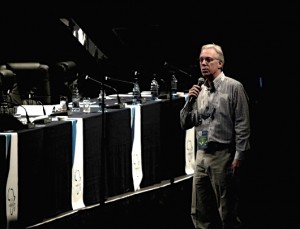
We are a little less than four-years away from the PyeongChang 2018 Olympic and Paralympic Winter Games. This is a story, just one of many, of their bid’s path, culminating in victory almost three years ago in Durban, South Africa.
Much is being written and read in the current media about prospective bid cities for the Olympic Games. A lot of the commentary pertains to “consultants”. Much of the commentary is ill-informed, or naive at best, or wrong, spiteful and even defensive at worst.
I have been asked by a lot of people to pull together my four-part series on the PyeongChang 2018 bid into one piece; so here it is.
A lot of people also asked me about my comments concerning the Munich 2018 bid. It is simple: they had a great bid team, a great message for the Movement and they were consistently excellent in their presentations, from their first one in Acapulco to their last in Durban.
Munich’s message was perhaps one bid cycle ahead of its time: the bid extolled environmental awareness, fiscal responsibility using legacy venues dating back to 1972, a commitment to expanding Germany’s experience of winter sport to other nations in need and a new model for bids going forward.
Had the city of Munich bid again for 2022, there is no doubt in my mind that the legacy from their great 2018 bid would have carried forward, and Munich could have easily won the right to host the 2022 Winter Games. But that was not to be and I am honestly sad about that. I think the Winter Games needed Munich more than Munich needed the Winter Games.
Below are all four posts linked together into a single piece. Let me warn you again, it is long. Please note my disclaimer about consultants in the first paragraph that starts the series.
It takes a team, not a person, to win a bid.
Thanks for reading, I know it is a commitment.
PyeongChang’s 2018 Path to Victory
Part I: Autumn 2009 – SportAccord Dubai 2010
Terrence Burns ©2014
As I have written many, many times – consultants and advisors do not win Olympic bids; Bid Committees win bids. To do so they must have a great team, great leadership, great relationships throughout the Olympic Movement, a great technical plan, a great message and the ability to communicate that message to the Olympic Family in a myriad of effective ways throughout the course of the campaign.
This series of four articles is about the PyeongChang 2018 Winter Games bid’s journey to victory from my perspective as an external advisor consulting on the bid’s brand messaging strategy (helping the bid define the answer to “Why PyeongChang?”). I was also responsible for the development and preparation of PyeongChang 2018’s presentations to the Olympic Family.
Many other crucial moving parts of the bid were working hard as well, simultaneous with our team’s efforts during the course of our almost two years together. The bid’s administration, technical planning, communications, international relations, and sport and venues teams to name a few worked equally hard in their respective areas to ensure the final, victorious result in Durban.
Can we be friends?
Our first meeting with the PyeongChang 2018 bid was a brief one. The meeting took place in an almost springtime snowstorm, with Governor Jin Sun Kim at the Denver SportAccord during March 2009. Governor Kim (Governor of Gangwon Province, where PyeongChang is located) was the instigator, driving force and leader of PyeongChang’s two previous bids, 2010 and 2014 respectively – both of those bids almost won, by the way. I worked for Vancouver 2010 and Sochi 2014, both of whom eventually defeated PyeongChang. Given those facts I wasn’t really sure how the meeting would go.
During the discussion, Governor Kim listened politely and nodded periodically. He spoke to us through his interpreter, though without committing to anything. I remember thinking that he seemed very tired – time zones are a killer. At the end of the meeting I wasn’t really sure what, if anything had been accomplished.
Only later did I learn that Governor Kim was listening acutely, very well indeed. Although I’d worked closely with Koreans many years before (I worked for Meridian Management, the IOC’s marketing agency in 1997 when Samsung joined the TOP Program), this meeting with Governor Kim reminded me again about the particulars of Korean business meeting etiquette. Today, by the way, Governor Kim is President & CEO of the PyeongChang 2018 Organizing Committee.
Over the course of the next few months we began a dual dialogue with both PyeongChang and Munich. Truth be told, my heart was with Munich because of my German wife, my love for the country (I worked there in 1991 with Delta Air Lines) and the city of Munich. Munich’s young bid was, as are most bids at that stage, somewhat chaotic with two initial leaders, Mr. Bernard Schwank and Mr. Richard Adams. PyeongChang’s team was no less confusing with various powerful entities jostling for internal influence and control of the bid.
In September of 2009, we flew to Seoul to present for the first time. The initial PyeongChang bid team now included personnel from Korean Air because Korean Air’s Chairman, Y H Cho, was selected to co-Chair the 2018 bid with Governor Kim. I particularly recall meeting Mr. Jiyoung Jung for the first time who would become a true friend as well as a colleague. The scope of requested work changed a few times – first PyeongChang wanted us to include a PR and Communications partner, and then they asked us to compete against a PR and Communications partner.
This is not unusual. Young bids generally have little understanding of the bid process, the work ahead, the skills they will need, the roles of advisors and the work that they could/should perform. And, consultants who claim credit for and/or exaggerate their work performed on previous bids often exacerbate this confusion. CV inflation is the most reckless, profuse and hidden Olympic “sport”. Lesson for future bid cities: extensively check references with former Bid CEOs.
Pitching a new bid committee is an exhaustive and often expensive exercise. For example, we made three trips and presentations to the Tokyo 2016 bid and believed, based on our final meeting, that we were hired. We were so certain that we bought Japanese mobile phones for our team (Japan had a proprietary telecommunications platform at the time). We weren’t hired, and I heard about buying those phones from my colleagues for years.
Pitching a bid can be exhausting as well because not only are you trying to explain what you do, what you have done and what you can do for a bid, you are often walking a thin line explaining (because bids always ask) what a competitor did or did not do on a previous bid.
For the record: when asked, I shoot straight; never denigrate, but always educate.
A logo for dessert
We were having dinner in Seoul at a Korean barbeque restaurant during the period we were still negotiating with PyeongChang. Earlier that day, the bid committee told us they were ready to select a logo. More often than not, new bids tend get this process wrong. To get to a serviceable logo, one should begin with a brand assessment and positioning exercise. This work then “informs” the designers so that their visual interpretation of the brand is consistent with its mission, vision and values.
But as I said, this rarely happens.
Usually someone decides that a friend or colleague can create a logo cheaply, or, they farm it out to a few designers with virtually no real briefing for the design. The designers are left to their own devices and we get bid logos that sometimes defy logic.
But I digress; back to the PyeongChang 2018 bid logo.
We expressed our “concerns” that they plowed ahead with logo development before the bid’s brand assessment and positioning work. We asked, “What is the logo trying to express? What part of the PyeongChang 2018 vision is it trying to articulate?” They listened politely and seemed to understand our points.
Later, at the aforementioned dinner (again, before we were hired) three gentlemen entered the crowded restaurant with 3 large advertising boards. Each board had a single, different version of a potential PyeongChang 2018 logo.
They cleared the table in front of me and said, “Mr. Burns, would you please tell us which logo you think is best?” No set up, no explanation of each designer’s intent – just a cold presentation to a jet-lagged foreigner with several Korean beers in him. I chose one, admittedly purely subjectively, and it eventually became the PyeongChang logo – whether or not my choice had anything to do with it, I do not know. By the way, the logo worked out just fine.
PyeongChang 2018 did eventually win, so I guess we can save the debate about the efficacy of brand positioning work for logo development for a later post – or, maybe even the efficacy of bid logos in general.
As an aside, I remember asking why are you spelling “PyeongChang” with a capital “C” in the middle of the name?
“We don’t want to be confused with Pyongyang…in North Korea,”someone answered.
“Ah”, I said; and the capital “C” stuck.
Finally Official
In late 2009, we had a final meeting/presentation with bid Co-Chairman Cho in the Korean Air headquarters in downtown Seoul. His daughter, Emily, a Korean Air marketing executive attended as well, and although not part of the bid committee she was extremely helpful to us throughout the campaign. We also had our final meeting with the Korean NOC.
In early January of 2010, we went on a venue tour in PyeongChang. I was on crutches from a little motorcycle mishap, and I remember standing on the icy ledge at the top of the ski jump. I think the Koreans were nervous that I would fall off. Perhaps that is why PyeongChang 2018 finally hired us – maybe they thought we were just as desperate as they were for PyeongChang to finally win. Time to go to work.
The Bid Committee had already written the Application File (they had two solid, previous versions as a foundation). Their technical plan was very good, not as attractive as Munich’s due to Germany’s existing winter sports infrastructure, but certainly very good.
What they lacked was a story and an answer to the question “Why PyeongChang?”
The first real challenge I recall was the IOC Teleconference after the submission of the Applicant File. The bid team already had sectional heads for each functional area, virtually all of whom were academics with excellent knowledge of their subject areas, but with minimal Games or Olympic Movement experience.
This short teleconference presentation to the IOC is designed to give the IOC a better understanding of the bid’s motivation and vision as well as its general technical and operational plans in as an efficient and affordable manner as possible.
Some of the speakers had taken part in previous PyeongChang bids and a lot of the technical material was simply updated and refreshed from PyeongChang 2014’s bid – which was fine, they were able to show progress with each successive bid.
As I read the drafts, again what was missing for me was the answer to “Why PyeongChang?”
Message Matters – A lot
As background, the 2010 and 2014 PyeongChang bids relied heavily on the message of the Winter Games as a peaceful means to unify the Korean peninsula. Now, there is no doubt that this is a vital geo-political issue, and it is a very personal and passionate issue for the Korean people. But there’s just one problem: the message had no real relevance to the Olympic Movement or for the Winter Games.
While working for Vancouver and Sochi, we knew this – and we were able to exploit it with clear, powerful value propositions that illustrated what each of these two cities could provide to the Olympic Movement and to winter sport.
I tried to adapt the presentation remarks (they were already written) around a concept that was taking shape in my mind, but was by no means a formal brand or communications platform, yet. At this point we could only adjust the texts, not re-write them (it’s easier to re-write than “fix by editing”, by the way, if one has the time).
I flew to Seoul to be in the room with them (off camera) for a few hours of presentation training, and the Q&A. The presentation went fine.
Then we got serious about creating the answer to the question, “Why PyeongChang?”
Initially, I received a great deal – a great deal – of pushback from some members of PyeongChang 2018 regarding the bid’s positioning and its brand platform.
It was difficult to make them understand that this brand work would serve as the very foundation for every single piece of PyeongChang 2018 communication over the course of the bid (speeches, brochures, press releases, presentations, advertising, direct mail, website, Bid Books, etc.). It is important to undergo a rigorous process to get it right because in the end, a clear and singular message is a bid’s only true point of differentiation from competitor bids.
We were competing against one of the greatest cities in the world, Munich, (the perceived “front runner” in the race up until a few months before the selection was made in July 2011) and a country, Germany, with a winter sports heritage and facilities second to none.
Munich 2018 also had a sophisticated bid committee, led by the extraordinarily competent Bernard Schwank, the extraordinarily popular Olympic Champion, Katarina Witt – and, for good measure, extraordinarily well-known and highly experienced German IOC member and IOC Vice President (then rumored to be the next IOC president) Thomas Bach. And, they had the Alps. It just didn’t seem fair.
We were also competing with another alpine gem, Annecy, France. Led initially by Olympic champion Edgar Grospiron, and then Charles Beigbeder, Annecy’s bid also offered bonafide winter sport credentials that PyeongChang could not compete with on a head to head basis. Annecy was also a stunning site for the Winter Games: picture postcard perfect.
But the Annecy bid suffered from a venue plan that many considered “too spread out” to be efficient. Nevertheless, we knew that the French could host a magnificent Winter Games and, they knew their way around the Olympic Family and the world of Winter Sport.
We considered both cities real competitors for the crown up until the last moments in Durban.
But I knew that we helped Sochi defeat Salzburg under similar “image” constraints – we just needed our own story.
One evening at home in Atlanta I spent hours on the phone, literally, arguing with a few members of the bid committee on the other side of the world about a suggested tagline for the bid. Someone wanted a tagline called “A Bigger Winter”. Even after accounting for translation and transliteration, I tried to gently explain why I thought “A Bigger Winter” was not a good idea in the context of this bid campaign.
If you have conducted business in Korea, gentle doesn’t always work. Koreans are passionate – which is why I enjoy working with them. You always know where you stand. So, I gave up on being gentle. We all agreed that we would wait until I delivered a new PyeongChang 2018 brand model before we addressed the “tagline” issue again.
The Journey to New Horizons
We all met for the first time as “the PyeongChang 2018 team” in Vancouver for the Games. Vancouver was Chairman Cho’s first major Olympic experience as head of the bid committee and we were all getting used to each other. Bid Cities at Olympic Games are a bit like new kids on the first day of school. They know they are supposed to be there, but aren’t sure what it is they are supposed to be doing (or what the IOC will allow them to do).
In Vancouver I was also introduced to a young woman named Theresa Rah. Theresa, I was told, was the new Communications Director. Little did I know that Theresa would become my creative muse for the bid’s story, and the anchor for PyeongChang presentations over the next 17 months.
In Vancouver I gave a presentation on Olympic branding and PyeongChang, and we agreed that I would present the final PyeongChang 2018 brand model to the entire team at SportAccord in Dubai in April.
By Dubai, the bid committee included representation from the Korean NOC, Gangwon Province personnel, members of previous bids and new bid members from Korean Air; it was a heady, complex mix of factions.
Y S Park, then head of the Korean NOC and a strong and consistent advocate of our work, was present as well with his excellent team lead by John Moon and Seihwa “Bonnie” Kim. Governor Kim was also in the room with his team, led by Byungnam Lee and Zoo-Whang Kim.
By this time PyeongChang had hired other consultants such as Vero, Stratos Safioleas (Stratos was onboard from the beginning and had in fact worked on the 2014 bid), Charlie Battle, Young-Sook Lee, and Laszlo Vajda to name a few. Cheil Communications also had a team led by Jooho Kim, Jace Oh and Alexis Choo.
The brand presentation I shared that day was a 110-page PowerPoint deck. That’s a lot of pages for anyone to sit through, especially listening to what may be one’s second or third language (or via a translator).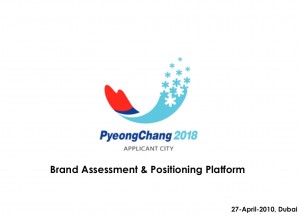
But it had to be done to prove why the old messaging would not work and why new messaging was required to win. It also had to be done with painstaking detail and metrics.
It had to be done precisely and with supporting documentation because that is what Korean people respect and expect, and it is how they conduct their own work.
And it is why the muddy fields of emptiness, death and destruction, in which my father toiled for three years as a young soldier in the Korean War, now comprise one of the most modern, dynamic and exciting cities in the world – Seoul.
Measuring Opinions Qualitatively and Quantitatively
I took the team through the PyeongChang 2018 brand research.
The words most highly associated and relevant to the words Korea/Korean people:
Family, Corruption, Precise, Hopeful, Hard working, Insular and Aggressive
I showed them what foreigners thought about Koreans, and we talked about how to build this research into a “story” for PyeongChang 2018.
Hard working = making and keeping promises
Precise (intelligent) = best plan for 2018
Dynamic = fast growing economy, new markets for winter sport
I showed them purposefully simplistic images of old thinking and perceptions of Korea versus the new Korea today.
For example, many non-Asians think of this when they think about Korean Culture…
or this…
But not about this…
or this…
I showed them how foreigners around the world and people within the Movement perceived them and their country – including the previous bids. And while it is true that cars, mobile phones, refrigerators, ships and all manner of manufactured goods are made in Korea…she, the girl pictured below, is also “Made in Korea” along with millions of other young, hip, Koreans just like her.
This was not an easy discussion.
We had many veterans of those previous bids in the room.
There were a few uncomfortable moments of silence.
The Road Ahead
But we had only one chance of defeating Munich and it had to be predicated on creating our own story and evaluation set. If left to comparisons with Munich’s architectural beauty, cultural attractions, leisure options, dining and shopping opportunities – let alone the sporting venues – PyeongChang would lose again. We had to create something new, something imaginative that could nullify or at least blunt Munich’s many strengths.
We had to look outward instead of inward. This meant we would not be mentioning reunification of the Korean peninsula as a key message for the bid. Again, that was not an easy or popular message to deliver, but it’s what we get paid to do.
I watched the reactions and tried to read the room. I was keenly interested in Chairman Cho’s perception of the message I was delivering, especially given that he was pictured in one photo example of the “old” Korea! Thankfully, he was in total support. He understood branding and marketing very well as head of a global airline, and he understood that we had to be modern and international in our image going forward.
There was also plenty of words of agreement and support, both from many Koreans in the room and from my fellow foreign colleagues, all of whom knew this was exactly the path that we had to take.
At the end of the presentation, we conducted an exploration in “taglines” and key messages. We recommended about 5-6 taglines, and I remember specifically leaning towards the concept of “Dream Big.” I liked the connotation of it; how it related to the people of Korea and the miracle that they have created in the last 60 or so years.
I liked the way it spoke to “persistence” – this was their third bid and they were not giving up. And I liked the unexpected nature of this bold, modern, international message for a PyeongChang bid because I thought it would surprise the Olympic Movement. (Spoiler Alert: “Dream Big” did not make the cut, it was in use already commercially)
As the presentation drew to a close I felt a general sense of relief in the room – certainly I was glad to have it over. I felt a lot of “buy-in” from the team. They understood the call for a new energy, a new dynamic and a new way of thinking about a PyeongChang Olympic bid.
I admit that the one person I was most concerned about offending was Governor Kim; after all, he led the two previous bids. Much of my presentation was a comparison of the old versus the new messages. I was afraid he might take it personally.
Nothing could have been further from the truth; he was a gentleman.
At the end of the presentation he thanked me and said, in English, “…well done, good job – I liked it…” He also liked “Dream Big” as a tagline – I think he and I, alone in the room, liked that option.
As a footnote, Governor Kim was the only person in the bid who sent me a thank you letter after PyeongChang’s victory in Durban. I received many emails and calls from my friends in the bid, but Governor Kim’s was the only “official” letter of thanks that I ever received– from anyone, in Korea. It was a gracious gesture. I still have it.
At the end of SportAccord, the bid team had very good understanding of PyeongChang 2018’s new brand positioning, its new key messages and the answer to “Why PyeongChang?”
We had our story.
We had our answer to “Why PyeongChang?”
And we had our new tagline.
We called it “New Horizons“
Now we just had to put it into practice, which is always harder than it appears.
Next: Part II – 2010 – The Year of Patience and Humility
PyeongChang’s 2018 Path to Victory
Part II: April – December 2010
Terrence Burns ©2014
This is part two of four in a series about PyeongChang 2018’s road to winning the 2018 Olympic and Paralympic Winter Games.
After the SportAccord meetings in April, we all had our “marching orders”. The PyeongChang Technical team was busy preparing the initial drafts of the PeyongChang 2018 Candidature Files. Our team was poised to review and edit the drafts for brand messaging consistency to ensure the bid’s new message, “New Horizons”, was reflected as much as possible and where appropriate in the texts.
Our team also began mapping the outlines and strategies for the ten (10) presentations that PyeongChang 2018 (and Munich and Annecy) would be making over the next 16 months. It was a daunting task, but in retrospect, having 10 opportunities to practice our message and presentation skills was a Godsend, as we shall later see. For edification, the ten presentations for the 2018 campaign were as follows:
The 2010 presentations:
- 21 October – 17th Association of National Olympic Committees (ANOC) General Assembly – Acapulco, Mexico
- 13 November – 29th Olympic Council of Asia (OCA) General Assembly – Guangzhou, China
- 26 November – 39th European Olympic Committees General Assembly – Belgrade, Serbia
The 2011 presentations:
- 16-19 February – IOC Evaluation Commission Visit – PyeongChang, Korea
- 23 March – 74th Association Internationale De La Press Sportive Congress (APIS) – Seoul, Korea
- 26 March – Association of Oceania National Olympic Committees (ONOC) – Noumea, New Caledonia
- 7 April – SportAccord – London, England
- 18 May – IOC Technical Presentation – Lausanne, Switzerland
- 28 June – Association of African Olympic Committees (ANOCA) – Lome, Togo
- 6 July – IOC Final Presentation – Durban, South Africa
For each of these presentations, we created a unique communications objective and strategy, given that each presentation had a different target audience and varying message to deliver. This entailed first creating the showflow, meaning:
- Defining how many speakers
- Identifying the speakers
- Defining how many films, helping write film briefs
- Drafting every speech
- Speech training raining every speaker
- Directing a design team on the “speaker support” (Keynote or PowerPoint) in both French and English
- Where applicable, Q&A definitions and practice sessions.
Each presentation took anywhere from four weeks to three months to prepare. It is a lot of work.
My two favorite activities were drafting the speeches and training the speakers. In total, we spent literally hundreds and hundreds of hours writing and re-writing drafts, and training speakers.
For PyeongChang I was insistent that everyone spoke English in his or her presentations. Why? It has nothing to do with language snobbery – it is purely pragmatic. English is the language in which the Olympic Movement does business. Speaking English to an international audience indicates that you and your team will be easy to communicate with – which means easy to work with – and it means less time fumbling with the simultaneous translation headsets during the presentation.
Often, senior officials or politicians simply cannot – or do not wish to – deliver a speech in English. I understand this – as a head of state or senior politician, one does not wish to appear less than perfect.
In this case I have a protocol. If they are the head of state, or a very senior minister, we let them give a (shortened) speech in their own language. Prime Minister Rajoy of Spain is the most recent client of ours (Madrid 2020) who spoke in his native language.
But unless the speaker has ample (and I mean a boatload) time to practice, this is a high-risk solution because we are trying to adapt a speech written in English to another language, and often the prose, syntax, alliteration and emotional flow do not transfer easily – or at all. So generally, I hate doing it. But the usual rule is that most Heads of State get a pass from the audience as long as they are brief; I repeat, as long as they are brief.
Sometimes, we teach the speaker an entire speech in English phonetically. This means the speaker may have no real idea what the words mean, but that he or she has memorized them.
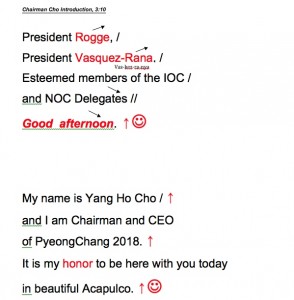 If the speaker understands English well, but has trouble with pronunciation, we adapt the written speech or the teleprompter with various spellings and visual clues as to pronunciation and intonation.
If the speaker understands English well, but has trouble with pronunciation, we adapt the written speech or the teleprompter with various spellings and visual clues as to pronunciation and intonation.
Chairman Cho’s first speech notes (at right) in Acapulco are a good example of this technique; we refined and used it in every presentation and it worked for him, and many others in recent bid presentations.
So, back to PyeongChang.
I felt that PyeongChang had to break out of the stereotype of boring presentations; sorry, there, I said it. And I knew for example, from watching the Tokyo 2016 presentations that it is folly to try to “force” people to be what they are not. But it is also folly to proceed as if it is a (insert major multinational here) board of directors meeting.
For PyeongChang we began with five objectives for the presentations: 1) English language, 2) young speakers, 3) female speakers, 4) emotion and 5) humor, where possible (humor is very tricky in foreign languages). I also knew that with ten presentations, we had to pace ourselves and slowly perfect our messaging and delivery.
We could not peak too soon (as you will read below, after our first presentation in Acapulco, I realized that we were in no danger of peaking too soon). It took us until SportAccord in London in April 2011 to even get close to meeting our presentation objectives. By the Lausanne IOC Technical presentation in May, we were peaking and by Durban in July, we reached our crescendo.
For the 12 October ANOC meeting in Acapulco, we delivered the first set of speeches to the team on August 24th. The standard procedure was for me to send the speeches to the presenters and ask for any written feedback (you learn quickly that only about 10% of the presenters give you written feedback). The bid committee team however, did not like my first round of speeches and made substantive changes, or tried to, throughout. We went back and forth, heatedly, via email and phone calls.
Finally I flew to Seoul to address the issue of who controls the presentation content and speeches. It was typical bid committee meeting; me on one side of a long table and about 15 bid committee members on the other side. Chairman Cho was there (at the head of the table). We began the discussion on who was or was not writing the drafts. There was a lot of frustration – on all sides. I was ready to go home, to be honest.
I am sure they got tired of my refrain “if you want to do what you did twice before you will lose again – be my guest…”. It was tense. Finally Chairman Cho called a break. He and I talked. He gave me advice on how to deal with Koreans, as well as my “style” dealing with them, which he found too aggressive and too blunt; it was a fair assessment. I listened. He listened. We went back in the room and he said to the team, “too many cooks in the kitchen, from now on Terrence writes all the speeches.”
Then, we began an intensive seven to ten days of one-on-one and full rehearsal training sessions, and then we would continue with one-on-one and full rehearsal sessions on-site.
After our first set of practice sessions in Seoul it was clear to everyone in the room that Theresa Rah was going to “carry our water” for the presentations going forward. Theresa, a former television presenter in Korea, grew up in various locales around the world and her English accent was impeccably Canadian-esque.
Her delivery was flawless and she always had excellent feedback and input on her drafts. Moreover, she also worked tirelessly to help other PyeongChang presenters with their presentation skills and English.
Our international relations team utilized Theresa’s skills as well. She was a true team player.
By this time North Design joined us to help with the presentations’ graphics. I have worked with David Woodward (Woody) and his design team on Olympic and World Cup presentations since 2003. Woody knew how to deal with the complexity – and pressure – of live presentations. There are always changes or adjustments to speeches up until the last-minute – which means the accompanying speaker slides must be changed as well, real-time – in two languages. It was a high wire act – Woody and his team handled it flawlessly.
I recall Munich taking the stage with their superstars (and they were superstars) – Thomas Bach, Katarina Witt and Bernard Schwank leading the way. The scripts prepared by my friend, mentor and former business partner George Hirthler, were crisp and on target.
They even had a video of Angela Merkel, the Chancellor of Germany supporting the bid (remember, this was the first presentation to the Olympic Family and they already had the Chancellor of Germany on film…that is called being prepared). They were upbeat and looked fabulous – they seemed happy and confident, and it showed. At that moment, I felt that they were everything that we were not.
Munich 2018 had an incredible technical video that “flew” the viewer through and around the mountain venues, accompanied by a live voice-over by Bernhard onstage. At that point our technical “film” was only maps and still images.
Munich also had a series of creative, atmospheric films capturing the beauty of the city and its people. Reto Lamm, a former snowboarding champion from Switzerland, and the epitome of cool, produced the films. We were still “struggling” with our own films at that stage. I remember having a dry mouth while watching them present. As presenters, they were amazingly good on their first shot out of the gate.
Finally, it was our turn. This first presentation was our “shake out cruise”. It was my opportunity to see how well our “New Horizons” message resonated and judge our speaking team live, in front of an audience.
For that presentation we had Y H Cho, Theresa Rah, Y S Park, Dae-Sung Moon (Korean IOC member and Olympic Champion) and Governor Lee (the new governor of Gangwon Province).
After our first presentation in Acapulco in October 2010, “improbable” was my first impression of our chances having watched Munich’s presentation to ANOC.
Acapulco is where we first introduced the tagline and theme that would carry us nine long months, thousands of miles and ten presentations around the globe – New Horizons. Here is the slide we used to describe “our vision” to the ANOC audience. The focus was on “new growth and new potential like never before.”
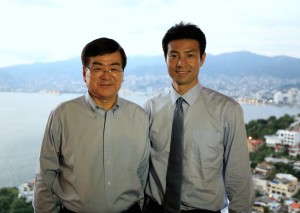
- Y H Cho and Olympic Champion and Korean IOC member Dae-Sung Moon relaxing after the Acapulco presentation. Photo Stratos Safioleas
My notes from that day read:
- New Horizons seemed to be the only recognizable “theme” by any city – we need to double down on it and provide new proof points going forward
- Ch. Cho needs a lot of work on his pronunciation and delivery…not used to speaking to an international audience…I gave him too much content
- Theresa – fantastic – will use her more
- Y S Park – has certain charm – used to speaking to the OF (Olympic Family) – can make him funny but I gave him too much content
- DS Moon – looks great, hard to understand – needs a lot more work
- Governor Lee – the new Governor of PyeongChang – not needed again until SportAccord, earliest (he didn’t last long enough in office to joint us in SportAccord)
- Films: more (lots) work to do – MUST HAVE A TECHNICAL FILM
- Speaker slides design – I think Woody’s design looked the best
- Overall, we have a long way to go – NEXT STEPS:
1) Intensive language and presentation training with Chairman Cho and others
2) Produce a new technical film, brief new film company, New Moon, on new films
3) Find young, athlete presenter(s)
3) Increase Theresa’s role in presentations
4) Blow out “New Horizons” because no one else seems to have a clear and concise message
In Acapulco, we had lots of internal drama – politics, factions, consultants leaving (then not leaving), clashing egos and the great battle of two styles of doing business – east and west, hard versus soft, discussions versus decisions, straight-forward versus obtuse…progress or procrastination.
From my perspective, here is the single most important thing to know in an Olympic bid: it has a beginning and an end; meaning, every single day matters.
That is it.
If a bid vacillates on making decisions, then it is sitting still; and if it is sitting still then it is either sinking to the bottom or falling behind.
This may sound dramatic or crazy, but I think no other “Olympic activity” comes as close to what the athletes on the field of play experience as does bidding for the Olympic Games for the bid committee team. It is high drama with no second chances. There is a start and a stop. Each competitor brings his or her own strengths and weaknesses. The “players” endure tremendous personal and professional pressure (how would you like to give a speech in front of the entire world in a foreign language?). It is pure competition and by the way, there is only one medal – gold.
After the presentations we had our debrief meeting. At these meetings all of the PyeongChang team would show up – many of whom I had never seen. One of the “critiques” I shared with PyeongChang 2018 about their previous bids was that Korean bids always brought too many people who seemed to do nothing but stand around in groups (amongst themselves) and not mingle with anyone else. At this point, PyeongChang 2018 seemed to be carrying on the tradition, as a phalanx of expectant faces looked at our team for answers.
I led off the meeting with my critique of our performance – I held nothing back and luckily all of the other external advisors agreed. Like me, everyone recognized the high quality of Munich 2018’s presentation.
There is always “that moment” in a bid campaign, when hope must triumph over fear.
This was that moment for PyeongChang 2018.
The team was quiet. They were confused and close to being dispirited. It was up to us external advisors in the room to address the situation honestly, but also in a way that provided a path forward. Following a summation of the points from my notes and others on how and where we needed to improve, I felt I needed a closing that would help them understand that all was not lost; in fact, we’d only just begun. We had all the ingredients of a great bid. Here is what I said, to the best of my memory:
“Munich 2018 just gave the best presentation that they will ever give in this campaign. It was brilliantly done, it was tremendous…but I believe that they will never give another one that good again. I don’t think they have a message yet that compares to “New Horizons”, and honestly they were so good today that I don’t know how they can top it. On the other hand, I believe that our team will only get better and better, and we will give our best presentation on the stage in Durban next July.”
I don’t know how many people in the room believed me, but I believed it. I just hoped that it was true.
Our next presentation took place on 13 November, to the Olympic Councils of Asia in Guangzhou, China. The presentation time was shorter, so we only had three speakers – Y H Cho, Theresa Rah and Y S Park – and one film.
The team was much more comfortable being in Asia, and I think that helped them onstage. I know one thing that made them relax, and that was a city full of Chinese food. Wherever we went in the world, no matter what city or cuisine, the PyeongChang team always found the local Chinese restaurant for our first or second meal.
Two of the more exciting moments in Guangzhou were 1) the Chinese apparently changed my middle name from “Hugh” to “Huge”, and 2) I worked up the nerve to ask Katarina Witt to have her photo taken with me.
Throughout the 2018 campaign, PyeongChang was fortunate to always be the last to present – this was good for a whole host of reasons. Very often bids are at the mercy of the technical abilities – or lack thereof – of the venue team that is managing technology.
In Guangzhou, both Munich and Annecy had technical problems in their presentations, which were fortunately solved by the time PyeongChang took the stage. Our team’s presentation was tighter in Guangzhou, but we still lacked any emotional cohesion with each other onstage. I thought we made improvement from Acapulco, but we still had issues with everyone’s (except Theresa’s) English delivery and pronunciation. We had to work harder; the good news was that Koreans work very hard.
The last presentation of 2010 was to the EOC in Belgrade, just 13 days after Guangzhou. A “perk” on this trip was that a few of us were able to hitch a ride from Seoul to Belgrade with Chairman Cho on his own plane from the Korean Air Boeing Business Jet fleet. It was a beautiful plane with four bedrooms, eight luxurious seats and a couch.
I dubbed the plane “Elvis-1” because someone asked me “how did you like flying on Chairman Cho’s plane?” I said, “I feel like Elvis.” So, it stuck. We had our own Korean Air attendant and the food and the wine were exquisite. It sure beat standing in line at the airport.
Given both Munich and Annecy were from European NOCs, we felt as if we were going into the proverbial “Lion’s Den”. I felt that this presentation, on European soil, would be tremendously important for our bid, but perhaps that is also how they felt in Guangzhou. I put a lot of pressure on the presentation team and in retrospect, maybe too much for some.
We were still experimenting with the speaker line up, e.g., who would open, and who would close.
For Belgrade we decided on the following order: begin with Chairman Cho again as the opener but with less content followed by a film, then Theresa, then Korean Olympian Kwang-Bae Kang, then Y S Park and close with a another film.
One incredibly valuable new asset in Belgrade was the use of teleprompters. Other team members had suggested it for earlier presentations, and I resisted. That was a mistake and I should have realized it earlier. Now we were using a teleprompter (as were both Munich and Annecy) and it helped all of the speakers a great deal.
Belgrade taught us a few more things. After the presentation, we were told by many of the Olympic media in the room that “PyeongChang wins on the words and the message…Munich wins on style and video…”. I appreciated the compliment, but I knew that words and message were only half the battle. In a forty-five minute presentation in a giant room, (as in Durban) style points will matter, I thought.
We simply had to get better at presenting. Both Theresa and Kwang-bae were very well received as speakers – young, enthusiastic and easy to understand; there was a lesson in that.
Our post-presentation meeting the next morning was not an easy one. We had a lot of ground to cover with little time.
I was departing Belgrade that morning on my way to Zürich to meet our team and prepare our other bid client, the Russia 2018 FIFA World Cup Bid, for their Final Presentation to FIFA on 2 December, but that’s another story. I was working hard to keep the two different bid’s films and speeches straight in my mind.
After the Belgrade re-cap meeting, I had one of the most extraordinary conversations I’ve ever had with a bid client. Chairman Cho cleared the room to speak to me alone. This is the gist of the conversation.
Chairman Cho: “I know I did not do well yesterday…”
Me: “No, you didn’t and it may have cost us a couple of votes…what happened…you were good in rehearsal…”
Chairman Cho: “I got nervous. Even though I am fluent, presenting in English is still very difficult. Listen – I do not need to speak. In fact if I am not good enough, please tell me. I don’t need the recognition – I am a busy, successful person. I am doing this bid because the president of my country asked me to, and he said to me “we cannot lose again”. I want us to win too, but I will NOT be a reason that we lose. If you want me to just sit on the stage and smile, I will be happy to do so…”
I was taken aback.
In most bids there is no small amount of infighting amongst the bid leadership as to who gets the most “air time” during a presentation. Some people even keep track of the length of other speakers’ speeches – really. I have even felt that some bid leaders were more interested in their own personal agenda than the bid’s. That is why this conversation was so refreshing – and invigorating. Chairman Cho meant it. He had no ego in this – he simply wanted to win for his country.
Whatever differences Chairman Cho and I had up until then, and there were a few, simply vanished in my mind. I really respected what he said. I committed to him, and to myself, to help him work harder. And he did work harder – he was tireless. Once, he called me at home and asked if I had seen the new film” The King’s Speech”. I said “yes”. He said, “good…that’s you and me” and then he hung up. Y H didn’t waste words.
We hired a London-based English language elocution firm to assist, but in the end it was simply Chairman Cho and I, or even more so, Chairman Cho and Theresa Rah practicing hours on end to improve his English pronunciation and presentation skills. The progress he made from Acapulco to Durban was extraordinary. When someone wants to succeed that badly, it is an inspiration to everyone else on the team.
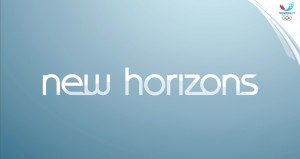 2010 was drawing to a close and we set our sights on what we had to accomplish in 2011.
2010 was drawing to a close and we set our sights on what we had to accomplish in 2011.
After three presentations in 2010, we knew we had a strong central message that so far, no other bid was able to counter effectively.
“New Horizons” was turning out to be something powerful and differentiating, but we still had not been able to communicate it fully, yet. We would, in time.
We knew our strengths and weaknesses. And most importantly, the intangible feeling of settling into a real “team” was beginning to take place. Often it takes the “heat of battle” to draw people together, to get them to assemble and follow one true banner of leadership and direction.
We had been humbled; yet thanks to the unique Korean culture, we persevered with great patience. That culture, and working with our Korean colleagues for almost two years, proved a powerful lesson for me, personally.
As we prepared for the last year of the campaign, it was evident that we were well on our way to being “competitive” in the race. And for the first time we were gaining a little momentum – and more importantly, confidence.
But I still did not know if we could really win; that would not come until later.
Next: Presentation Overdrive
PyeongChang’s 2018 Path to Victory
Part III: January – April 2011
Terrence Burns ©2014
The year 2011 ushered in a string of staggered (and staggering) presentations to the Olympic Family and the IOC, beginning with the IOC Evaluation Commission Visit to PyeongChang, 16-19 February. For any Bid Committee this is probably the longest sustained period of stress (and more than a little fear) in the entire bid process.
During the EC Visit, a team of eleven Olympic Movement and Games subject matter experts visited the Alpensia resort in PyeongChang for four days of non-stop presentations on all themes of the bid book, venue and site visits/presentations and meetings with government officials. All presentations included thorough and specific Question & Answer sessions as well.
The 2018 Winter Games IOC Evaluation Commission:
Gunilla Lindberg SWE IOC Member Chairwoman
Angela Ruggiero USA IOC Member
Barry Maister NZL IOC Member
Dwight Bell USA US Luge Federation President
Tsunekazu Takeda JPN Japanese NOC President
Ann Cody USA Paralympic Games athlete and administrator
Gilbert Felli SUI IOC Olympic Games Executive Director
Simon Balderstone AUS IOC Environmental Advisor
Philippe Bovy SUI IOC Transport Advisor
John McLaughlin CAN IOC Advisor (finance)
Grant Thomas USA IOC Infrastructure Advisor
To begin the story of PyeongChang 2018’s EC visit, one must go back to November and December 2010. During those months, the external consultants team including myself, Charlie Battle, Erskine McCullough Luciano Barra, Mike Lee, Stratos Safioleas, Laszlo Vajda and others met the proposed Evaluation Commission Visit speaker team.
We worked very closely with Bid Team member Byungnam Lee, a great colleague, friend and a key player in PyeongChang’s eventual victory.
On December 15, 2010, the candidates were led one by one into a large room and asked to read a portion of a draft speech in order for us to ascertain each person’s English language speaking ability. Virtually every speaker was an academic, and had also participated in the drafting of the Bid Book in his or her functional area.
Imagine walking into a room of bid leaders and foreign Olympic “experts”, and being asked to read aloud with conviction and passion a technical speech in another language. Not easy. Fortunately, as academics many of the speakers were experienced presenters in front of groups – albeit students.
None of the speakers had a problem with content knowledge, but more than a few required extensive presentation and language training; but that is what we were there for. We took notes on the good, the bad and the “bridge-too-far” aspects of each speaker’s presentation, an example of my notes are to the right.
Our team, working with the first round of drafts (mostly) supplied by the speakers and bid committee, finished reviewing and editing (sometimes re-writing entirely) the seventeen (17) EC theme speeches by mid-December.
The second round of drafts was delivered mid January. We then refined each version many times over until the day – or in some instances, the moment – of the actual presentations.
In late January, we first traveled to Seoul for rehearsals and presentation prep, then we went onto PyeongChang. Here is our core external presentation development team: from left: Sara Blease, Terrence Burns, Ansley O’Neal, Lou Lauria, Randy Phipps and David Woodward.
By now Caroline Roland and Barnaby Logan of New Moon films were onboard working alongside our Cheil colleagues, and our films were improving greatly. We were trying to counter the points that Munich 2018 were making in their presentations about the beauty and variety of fun shopping, dining and entertainment options in the city of Munich (the implication: those amenities were not available in PyeongChang).
It was a good strategy because the IOC members and the Olympic Family often spend two or more weeks at the Games, and they must have something to do when not at an Olympic event. Obviously, Munich offered a lot more entertainment value to the Olympic family than did the closest “big” city to PyeongChang, Gangneung – population 230,000.
To answer this challenge, our team created a concept called “The Best of Seoul”, later changed to “The Best of Korea”. The idea was simple: given that we were at least 90 minutes away from Seoul, a large, thriving world-city with many great restaurants, shopping malls and entertainment options, why not bring those amenities to PyeongChang for the period of the Games?
It was agreed to build a Best of Korea Pavilion in and around the Alpensia Resort (heart of the Winter Games). In this space we would have temporary versions of Seoul’s most popular restaurants, shopping experiences and nightclubs. Voila – Seoul in PyeongChang.
One of the best things about Korea is the food, and our team had ample time to sample just about every type of Korean food – and alcohol – imaginable.
Nothing breaks down barriers such as sitting on the floor, serving each other food and drink (we learned to always pour your fellow diners’ drinks first, before one’s own) and cooking meat on a Korean Barbeque Grill.
The beef that originates in the PyeongChang region is said to be the best in Korea; by the way, I concur.
Here are three of our presenters, Young-hee Lee, Minjung Sung & Won-ho Park at one of our many dinners in PyeongChang.
Korean Drinking Games – not sure what else I can say about this picture other than it was a solo performance by our Games Security expert.
Over the course of the EC preparations it began to snow… a lot. Frankly it was what we were hoping for because it added to the winter ambience of the countryside and surroundings. The day the EC Commission arrived, the city of Gangneung received over three feet of new snowfall – a blessing, as everything looks better in a fresh coat of white snow and it proved we would have plenty of snow for the Winter Games.
To be honest those days all tend to run together in my memory. We were up early every morning for hours of speaker training and rehearsals, and then long evenings for Question and Answer preparation. Each slide’s content, spelling (both French and English) had to be checked, re-checked and then checked again because we were still adjusting speeches throughout the rehearsals. They were easily one hundred-hour weeks for everyone on the PyeongChang team.
Lou Lauria and Ansley O’Neal led the venue presentation preparations for our team. Lou and Ansley prepared the presentations and prepped the speakers at every venue for the EC’s visit. A lot of these presenters were Olympians and athletes. One of the best parts of our job is when we get the opportunity to work with athletes. Athletes are comfortable taking direction, which means they are “coachable”. They are also competitive, which makes them want to excel.
One of the most emotional stops for the EC during the tour was a stop at the Gangneung Skating Rink – the proposed curling venue for the Games. A choir of 2,018 residents serenaded the EC team, and media, with Abba’s classic “I Have A Dream”.
Their beautiful voices filled the arena with a warmth beyond mere temperature. Many of the Evaluation Commission members as well as the PyeongChang 2018 team (and media) were touched with the simple emotion of the moment; eyes welled and tissues appeared.
The performance illustrated the gentle, almost innocent nature in certain aspects of Korean culture. It was a genuine, heartfelt moment that was classically Korean in its conception and implementation. It was a beautiful gesture, and one learns to appreciate those in a long bid campaign.
After a long and stressful week with hours of presentations, hours of answering questions and hours of worrying, it was suddenly over. There is nothing quite like the sense of relief and release at the end of an IOC Evaluation Commission visit. It is difficult to describe the commingled emotions of anxiety and anticipation that precede the visit. At first, the week seems like it will go on forever – then suddenly all the scripts, drafts and urgent notes from the previous few days are lying on the ground, spent. It is very much like an Olympic Games.
Each day is an exercise of the Bid Committee holding its collective breath, praying nothing goes wrong. It is our job, as external advisors who have experienced this many times, to assure the Bid Committee that the Evaluation Commission visit is not an attempt to trip up or trick anyone into making a mistake; quite the contrary.
The EC want to be informed and they want to help. Many times during the presentations EC members such as Gilbert Felli would offer incredible, experienced guidance on many issues. Moreover, the Bid City Relations team, led by Jacqueline Barrett, was also there to lend support and guidance, which they always did with patience and grace.
The post-EC visit recap meeting at the Alpensia resort was slightly euphoric for the team; the alcohol helped. Frankly, the team did a spectacular job. The presentation room looked great thanks to our Cheil colleagues, especially Jace Oh.
Chairman Cho was the consummate host, both inside the room and at the social functions. Theresa shined as always, but even brighter (although there were many PyeongChang team members in the room who had participated in previous PyeongChang bids’ EC visits, neither Chairman Cho nor Theresa had any idea of what to expect – and they handled it flawlessly). Everyone executed well with his or her speech. The slides and films looked great – no technical glitches. And due to exhaustive preparation and rehearsal, the dreaded Question & Answer sessions went very well.
The EC visit was also the first time we, as external consultants had the opportunity to witness the abilities and professionalism of the entire PyeongChang bid team on a grand scale. Everything was extraordinarily well organized and prepared.
The internal team worked magically with us and the presenters on content changes and adjustments. And it was the first real opportunity for us to interact with the broader team on a large project.
I left the EC visit tremendously impressed by the entire Bid Committee. I could see the benefits of experience from the two previous bids. I thought, “These guys will host a perfectly organized Winter Games…”
I also thought the international media present were both surprised and charmed by what they saw and heard. I believed that these veterans of many bids began to realize that Pyeongchang 2018 was something entirely different from what they expected or had seen before. Their feedback was very positive and encouraging for our team.
And we had a few glitches. At the Ski Jump venue presentation, no one seemed to be managing the Asian media crush and they descended into the presentation itself, obscuring the EC members’ ability to listen and learn. The EC team were visibly agitated and decided to descend to the ski jump landing field and walk to the next presentation at the Cross Country venue, rather than fight their way back through the media group to the bus. But that was just one small issue in an otherwise flawless week.
Unfortunately we had little time to relax or revel in the accomplishemnt because we had to prepare for two quick presentations in March:
- 23 March – 74th Association Internationale De La Press Sportive Congress (AIPS) – Seoul, Korea
- 26 March – Association of Oceania National Olympic Committees (ONOC) – Noumea, New Caledonia
The AIPS presentation, in Seoul was the easiest of all the presentations we did because it was on home ground. The presentation team was a bit tired after the marathon EC Visit. It took a little coaxing to get them focused on the AIPS; they were simply exhausted.
I can only imagine how tired the Munich and Annecy teams were as they had to fly half-way around the world for AIPS. Because this presentation was to media professionals, the content was a general overview of the bid, without a particular focus on any particular Olympic stakeholder – other than the media professionals. We felt it was crucial for them to understand our key differentiator – New Horizons – perhaps more than issues such as the venue plan, for example
True to Olympic practice, we too had a “map” similar to the one Rio used with great effect at the IOC Session in Copenhagen in 2009. Our map showed where all of the Winter Games had been held through the years, with an obvious gap in Asia. In the end I am not sure how effective this was, but I do think it made a subtle point – but that is only if geographic rotation still mattered in the Host City selection process.
Next stop was both a challenge (to get to) and thrilling (to see); we went to Noumea, New Caledonia to present to ONOC. Once again we were fortunate to fly on Elvis 1, Chairman Cho’s plane. This made the trip quiet relaxing.
Theresa catching up on the news, on the way to Noumea on Elvis 1.
The presentations were very short, and French Polynesia was a long way to go to speak to a few NOCs for just a few minutes. Still, every presentation made us a little bit better. Again, I think PyeongChang had an advantage here because of geography. Once again, Munich and Annecy had to fly half-way around the world and to the Southern Hemisphere.
One very nice thing about the ONOC presentations was the intimacy of it. We were presenting in a smallish boardroom. We practically sat next to and on top of each other, and we were all in the same hotel. It broke down barriers and we actually had to time talk, drink and eat with the other bid teams.
Munich sat next to us in rehearsals and we were watching each other furiously write and re-write our scripts.
As I wrote, the presentation room was small but adequate.
George Hirthler and I had a great time at the piano bar one evening.
After we took off from Noumea headed back to Seoul, Chairman Cho casually asked us if we would like “fly over” and see Australia’s Great Barrier Reef as if it were a normal question to ask. No kidding. So, we did. The flight crew radioed Australian Air Traffic Control and off we went. When we got there, we were able to descend to around 5,000 feet and fly circles over one of the most beautiful sights in the world. It was incredible. I am adding some of those photos here. The pictures may not add much to the story of the bid, but it was an amazing moment most of us will most likely never experience again.
SportAccord, London
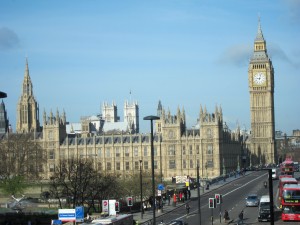 Our next target was the SportAccord presentation in London on 7 April. SportAccord is the first official ”next step up” from the preceding presentations. This convention is actually the bid cities’ first official time onstage in front of a truly international media set, as well as sports and sports business professionals from around the world. It is, and should be, a warm up to the final two presentations – the IOC Technical Presentation and the IOC Final Presentation – albeit in a shorter format. SportAccord’s twenty-minute presentation seemed an incredible amount of time compared to the team’s previous presentations, which were limited to ten or fifteen minutes in length.
Our next target was the SportAccord presentation in London on 7 April. SportAccord is the first official ”next step up” from the preceding presentations. This convention is actually the bid cities’ first official time onstage in front of a truly international media set, as well as sports and sports business professionals from around the world. It is, and should be, a warm up to the final two presentations – the IOC Technical Presentation and the IOC Final Presentation – albeit in a shorter format. SportAccord’s twenty-minute presentation seemed an incredible amount of time compared to the team’s previous presentations, which were limited to ten or fifteen minutes in length.
We began work on the SportAccord presentation almost as soon as we returned home from the EC visit. The first thing we did was review the scripts and “performances” from the previous presentations. Looking at the scripts, I noted how we had gradually refined and clarified our central message of New Horizons within the presentations and communications channels. We noted the continual progression of films with our partners at New Moon and Cheil. And, we decided to introduce one new speaker to our SportAccord presentation, Mr. Byoung-gug Choung, Korea’s Minister for Culture and Sports.
Given Katarina Witt’s extraordinary popularity in the previous Munich 2018 presentations, we were getting a significant amount of pressure to bring Olympic Champion Yuna Kim onto the PyeongChang 2018 presentation team. My personal opinion was that Munich 2018 was relying too much on Katarina, and that over time this would fatigue the Munich 2018 message. Many friends in the Olympic media privately concurred. I had the same concerns about Theresa as we were leaning very heavily on her up to SportAccord. But the more the media saw Theresa, the more they wanted to see her speak. She was our secret weapon, but suddenly she was not so secret any more.
Yuna’s eventual participation in the bids presentations, an appearance in our technical film at SportAccord and then speaking roles at the IOC Technical Presentation and the Final Presentation, was driven both by logistics and strategy.
First, up to SportAccord, her training schedule simply would not allow time to practice for multiple presentations.
Second, and more importantly, we wanted to “hold” her until the Lausanne presentation to the IOC Members. We had not seen Yuna speak publicly yet, and the IOC Technical Presentation would give us the opportunity to allow her to speak in front of the IOC members alone, without hundreds of other people (and pressures) in the room.
And third, we needed more athletes, female athletes and younger athletes (no offense, Dae-Sung and Kwang-bae) in the speaker set. And, it helped that she was the reigning Olympic Champion and a superstar in her own right after her stunning Vancouver 2010 Gold Medal performance. What I was unprepared for was just how powerful a combination that she and Theresa would make onstage together – but more on that later.
Munich was already experimenting with its positioning against “New Horizons” with language such as “new territories are fine, but the Olympic Movement must also replenish its roots from time to time…”, or words to that effect. I interpreted this to mean that our New Horizons message was hitting home – hard. Anytime a bid city changes its key messages to react to a competitor’s key messages is a good sign the competitor is making progress.
We delivered the first set of drafts on 3 March, and thirty (30) revisions later we were ready on 7 April. For SportAccord, we opened with a new film “The Best of Both Worlds (the Best of Korea concept) at 1:40 in length, Chairman Cho (2:45), Minister Choung (1:30), Theresa Rah (6:30), Kwang-Bae Kang (1:45), Venue plan film with Yuna Kim at 3:45), Dae Sung Moon at 1:00 and a new, New Moon film to close.
The timing on paper was about 21:00, one minute over the 20:00 maximum. It is my practice to attempt to follow the IOC’s stated timing guidelines to the letter. You can tell when a bid city accidentally exceeds its time limit by a minute, or even two – often the audience reactions and applause slow down a well-timed presentation. But you can also tell when a bid city is deliberately taking advantage of the rules. My view is that it is difficult enough to win while reacting to things beyond your control, so why risk a warning letter from the IOC over something that you can control, such as presentation time limits? Bottom line: follow the rules.
Our rehearsals both in Seoul and London were markedly different from the year prior. The EC visit really gave our team a boost and new confidence. It is an understatement to say that the PyeongChang bid team was under extreme pressure from all levels of Korean society and government to win 2018, its third attempt at the Winter Games. I honestly believed that bidding for the third straight time would be appreciated by the membership, but I also believed that if we were not good enough we would not win – regardless of the number of attempts. But the team never panicked, never broke ranks and never let the stress show. I was truly humbled at their work ethic and commitment. They did not get rattled, ever; they were tough, focused people.
During the SportAccord rehearsals I noticed the birth of something new. The presentation team was having a good time. There was a lightness and air of humble confidence about them for the first time. They made fun of each other (in a Korean kind of way). They let me (gently) make fun of them (I liked calling Chairman Cho “cowboy” in order to get him to laugh a little and relax). There was much laughter. I think they really began to respect each other and understand the most important thing in the race: that they could only win by being a team. This is what I had been waiting for; sometimes it happens, sometimes it doesn’t, but when it does happen it is magical to watch.
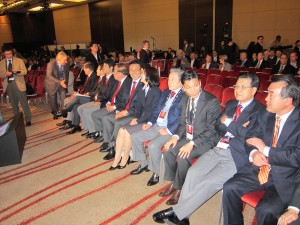 The SportAccord presentation room in London was packed, and with more media than we’d ever seen. The ceiling was lower than a normal auditorium and I felt that the audience was very close to the stage, almost in the laps of the presentation teams. I thought this was good for us because up close, the audience could see our team’s newfound camaraderie and confidence, and understand that this was a NEW PyeongChang bid. We had a new energy at SportAccord and I was glad the audience could see it up front. We were not afraid of Munich anymore.
The SportAccord presentation room in London was packed, and with more media than we’d ever seen. The ceiling was lower than a normal auditorium and I felt that the audience was very close to the stage, almost in the laps of the presentation teams. I thought this was good for us because up close, the audience could see our team’s newfound camaraderie and confidence, and understand that this was a NEW PyeongChang bid. We had a new energy at SportAccord and I was glad the audience could see it up front. We were not afraid of Munich anymore.
Leading up to SportAccord, Theresa and I (mostly Theresa) spent intensive time and effort working with Chairman Cho on his English and presentation delivery at his office in Seoul. He was becoming much more comfortable with the teleprompter, and he was learning to add emotion and passion to some of the key phrases.
My number one objective with Chairman Cho was to try to humanize him onstage; it wasn’t that he seemed inhuman; he just needed to relax and be himself. By that, I mean make him less “Chairman-esque” and more like the personable, kind person that he actually was.
His culture and his role as head of a multi-national conglomerate and other associated entities formed his public speaking persona, and his interaction with team members. Business presentations in Korean culture of a certain age, and in Asian culture in general, tend to be straight forward, humorless and, well…often bland. I recall asking the bid team to smile more onstage, and was told that Koreans considered people who smiled a lot to be idiots. That of course, may have explained my initial communications challenges with the team the year prior…
In the end, I realized that there was only so much we could accomplish with Chairman Cho’s presentation skills in such a short period, so we had to focus on what was most relevant and possible. With Chairman Cho’s encouragement and consent, we agreed that I would give Theresa many of the lines and phrases I would traditionally give to a bid leader in a presentation. In retrospect, they made a great team because we had to be creative in their respective roles and I think it made them more interesting onstage.
By SportAccord, Chairman Cho was effective in delivering his number one message:
Our vision, called “New Horizons”, is simple: we want to help promote the Olympic Movement, and to grow winter sport to new regions of the world…
To leave a legacy of new potential like never before.
- We want to give 650 million young people in new markets the opportunity and the access to enjoy winter sport
- We want to plant the seeds to grow new roots for winter sports; and
- We want to diversify the financial support for winter IFs and sport through new investment from new regions.
Direct. Clear. Simple.
And most of all, very difficult to attack by our competitors.
One of the reasons we were able to distill the concept of New Horizons down to a few simple messages was because we had to do so for the speakers (other than Theresa) and for the Korean domestic audience. It was a good lesson for me.
Both Annecy and Munich gave their usual excellent presentations, but for the first time I felt a bit of the spark had gone out of Munich’s routine. I am not sure why, maybe it was the room, but they appeared to be constrained. Having seen them present several times, I thought they were almost struggling to get their points across. Maybe I was seeing what I wanted to see but I also sensed, rightly or wrongly, that they were beginning to take us seriously; that we were emerging as a real threat. They could, perhaps for the first time, hear PyeongChang’s footsteps behind them.
When our team finished, there was a rush of media (a new experience for us) for interviews and comments that rivaled that of Munich. The team was proud, slightly surprised and very relieved. I recall standing aside, out of (always, as advisors should be) the photographers’ shot lines, watching them congratulate each other.
They were emotional and they were smiling, and no one looked the least bit like an idiot.
That is when I knew in my heart that we could actually win this race.
NEXT: The last three presentations of the 2018 campaign
PyeongChang’s 2018 Path to Victory
Part IV, Final Chapter: May – July 2011
Terrence Burns ©2014
With SportAccord behind us, we could now focus on our final three presentations, ANOCA in Togo, the IOC Technical Presentation in Lausanne (hereafter referred to as “Lausanne”), and the Final Presentation in Durban (hereafter referred to as “Durban”). As with every presentation we made, I told the team it was irrelevant how well we did or did not do in the last presentation, what mattered was the next presentation.
The Lausanne Presentation was added during the 2016 Olympic Games campaign in order to provide the IOC Members with a forty-five minute presentation on the technical aspects of the bids. Given IOC Members were still not allowed to visit the bid cities, many felt this new presentation would give them an opportunity to delve more deeply into the technical aspects of each bid given the IOC Final Presentations tend to be more emotional than technical.
Much mystery and myth surround the IOC Technical Presentations because each team bid can only have six presenters (plus their IOC Members if they have any), and the presentation is a closed-door session to the IOC Members only. Although the IOC does not publish absolute guidelines, it is generally felt, or imagined, that they would like each presentation to be about seventy percent technical and about thirty percent emotional.
The prevailing Olympic legend is that in the 2016 race, Rio was behind at this late stage of the campaign. Realizing this, Rio decided to do three bold things for Lausanne: they attacked the economic question by bringing in the president of Brazil’s Central Bank, Henrique Meirelles, to assure the IOC members of the country’s solvency and long-term economic outlook. They focused on the more emotive and festive aspects of their bid, instead of the technical ones. And, that is when they also introduced “The Map.” Perhaps that strategy helps to explain the current, ongoing drama with the technical preparations for Rio 2016.
Each successive bid since that time has attempted, in one way or another, to emulate some of the Rio strategy for the Lausanne presentation; e.g., more emotion. We certainly did.
Over the course of the previous presentations, Theresa Rah established herself amongst the Olympic Family as the “must see” portion of each PyeongChang performance. Now it was time to launch our second secret weapon, Yuna Kim.
Prior to Lausanne, we received intense inquiries from the media and from friends around the Movement as to when we would “unveil” Yuna. Given what we believed at the time (and what we were hearing from our Olympic Family friends), Rio really did alter the 2016 race with their Lausanne presentation. Rio not only made up ground on its competitors, but also emerged as the perceived front-runner in many people’s minds.
Based on this, it made sense to introduce Yuna to the IOC during the Lausanne presentation. We did not want to “save” her for Durban for two reasons: 1) we felt we were getting closer to Munich, so a strong Lausanne presentation with her presence might help us be perceived as “equals”, and 2) we had another “surprise” for Durban (more on that later).
Preparations for the Lausanne presentations took place again first in Seoul and then in Lausanne. We made the decision early to place more emotional emphasis than expected in Lausanne. Part of this was of course ensuring we had memorable films to support the overall message. I envy filmmakers, I really do because I lack any talent whatsoever to be one and I think they do interesting work. But I am also glad that I am not a filmmaker in bids. Films, or any design or art, are extremely subjective – especially across cultures.
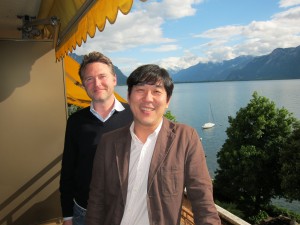
- Barnaby Logan & Jace Oh – Montreux, Switzerland
For Lausanne, we had scheduled two “emotive” films and one technical film. As I said, emotive films are often a challenge across cultures and this presentation proved no exception.
The bid committee wanted changes to the two New Moon films.
Barnaby Logan, Jace Oh and I spent many hours in our Montreux hotel (where we were holding the Lausanne rehearsals) refining the films to the bid committee’s satisfaction. It happens with virtually every bid.
As I said, I do not envy filmmakers, but Caroline Roland and Barnaby Logan of New Moon came through with great films for Lausanne.
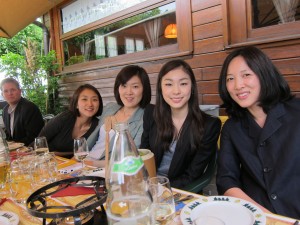
- From right, Theresa Rah, Yuna Kim, Hyejin Choi ,Seihwa Kim and David Woodward
The evening before our presentation we all had a traditional Swiss dinner of meat and cheese fondue at Le Chalet Swiss.
This authentic Swiss chalet is located in the Sauvabelin woods, overlooking the city of Lausanne and Lake Geneva.
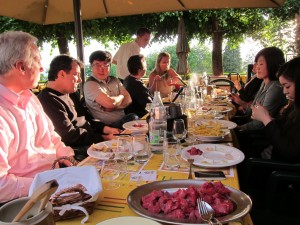
- More of the PyeongChang team at the Fondue Dinner
In addition to Yuna, we had two new “speakers” for the Lausanne presentation. I use quotation marks for the word “speakers” as one was live and one appeared via video.
Below left, the president of Korea, Mr. Myung Bak Lee, appeared on video, and below right, Mr. Sung-Hwan Kim, Minister of Foreign Affairs and Trade, Republic of Korea had an onstage speaking role.
These two gentlemen focused on Korea’s commitment to sport and affirmed Korea’s commitments to the guarantees that are required by the IOC. Minister Kim’s English was impeccable and he was an excellent speaker.
Presidents of countries have gravitas that always manifests better live than on video. President Lee’s video was good in that he followed the script we created (that is not always the case with some heads of state), but we had no control over the set up or filming. In the film, I thought President Lee was difficult to understand, and it was shot at a curious angle. But I also knew we would have him “live” in Durban. The point for Lausanne was to illustrate complete government commitment to the bid. President Lee and Minister Kim did that in spades.
At first I struggled with exactly how and where to use Yuna in the presentation. What message would she be most effective in delivering? What area of the bid narrative best fit her personality and experience?
The most obvious section of the presentation to use an athlete pertains to the venue plan or the Village. So, we made the decision to let Yuna and Dae-Sung Moon (Olympian and IOC Member) handle these two areas.
Initially this seemed like a “waste”, using a vivacious personality like Yuna to discuss the technical plan. But we were able to use her unique personality and fame in a humble way. She began by telling the IOC Members that she was more nervous speaking English in front of them than she had been in front of billions of television viewers watching her perform live in Vancouver – and she was nervous, but it came across as charming and sweet.
She also told them that her purpose there that day was much more important than a Gold Medal. She told them about the often-lonely nature of her sport, and she told them that her success as an athlete was directly attributed to Korea’s “Drive the Dream” program; a program that supports young winter sports athletes in Korea.
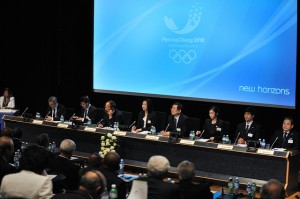 Her performance was touching and very personal. She managed to inject emotion and honest personal feelings into the technical portion of our presentation. And, she looked great onstage with Dae-Sung and Theresa.
Her performance was touching and very personal. She managed to inject emotion and honest personal feelings into the technical portion of our presentation. And, she looked great onstage with Dae-Sung and Theresa.
Lausanne also held another surprise. For the first time, PyeongChang used the French language in a portion of our presentation. By this point in the campaign, the messaging from Munich shifted to something like “this is not a race about geography” in an attempt to counter the New Horizons platform for a Winter Games in Asia.
Theresa’s opening remarks were calculated to counter attack that notion head on by using the same precise words, and she did so in flawless, emotional French. This is the gist (the original English text) of how she began her presentation:
Geography refers to a place, to a space that we can feel, touch and see.
But the Olympic spirit is not attached to one geographical location: it is universal.
The Olympic Spirit lives in the dreams, expectations and the hearts of all people, young or old, wherever they are.
That is why this is not a competition about geography.
This is a competition about dreams.
It was a beautiful sentiment delivered beyond description. It used Munich’s own argument – “this is not a race about geography” – to great effect for PyeongChang’s cause. And it illustrated that PyeongChang was capable of delivering a sophisticated, international, and cosmopolitan image to the world.
Theresa often protested (politely) that her French was not perfect, and she was self-conscious about it – but who would not be, speaking in not one but two non-native languages in front of the IOC. But no one in the room expected perfection. What they did expect was determination, heart, passion and a desire to host the 2018 Winter Games. I believe they got all of that, and even more.
As the team left the presentation room the media surrounded them. The presenters were beaming. They went into the “Lion’s Den” and came out not only alive, but certain in their hearts that they did a superb job.
I have worked with a lot of bids but I have never seen a team of people work as hard as did the Koreans – not just the presenters, but everyone on the PyeongChang bid committee.
They were relentless in their preparations and it finally paid off.
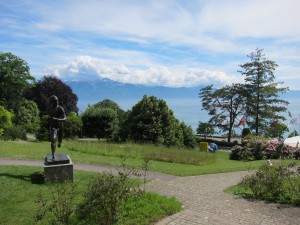 It was a brilliant day full of Swiss sunshine and Swiss blue sky; hard to describe if you have not seen it. It looked like an advertising poster.
It was a brilliant day full of Swiss sunshine and Swiss blue sky; hard to describe if you have not seen it. It looked like an advertising poster.
The PyeongChang team gathered on the steps of the Olympic Museum to savor the moment.
Everyone was smiling and taking pictures of the Museum, the lake, the sky and each other.
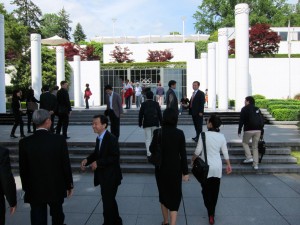 The non-presentation team members of the PyeongChang bid committee were there too, interacting with, well…with everyone. It was, as they say, a “moment”.
The non-presentation team members of the PyeongChang bid committee were there too, interacting with, well…with everyone. It was, as they say, a “moment”.
The post-presentation meeting held in a tiny bar of the bid committee’s Lausanne hotel was crisp and upbeat, as everyone was leaving. The team was still buoyant, perhaps buoyed by many large glasses of Swiss beer. Everyone realized that we made tremendous progress for the bid in Lausanne. We had time for one large breath of relief, but we also knew that I was delivering a new showflow and round of speeches to the team within seven days to start rehearsing for Durban.
I got on a train for Zürich to catch a flight, and immediately received a call from an IOC Member who not only stated that he thought PyeongChang had the best presentation, but that it was surprisingly good.
His call and other immediate, similar feedback made me realize that we had finally broken through the “star power” of the excellent Munich 2018 bid team. Munich’s presentation was still extraordinary both in style and in substance, but I now felt we at least had a fighting chance. But we still had a very long way to go.
The Final Lap
But before we got to Durban, we had one more stop to make in Africa. Late in 2010, the bid committees all elected to move the presentation to the African National Olympic Committees (ANOCA) on 29 June of 2011; just one week prior to our Final Presentation in Durban. Bad timing. Had we known how exhausted we would all be by June of 2011, I believe that we would have voted to keep the ANOCA presentation in 2010.
We combined our ANOCA and Durban presentations rehearsals in Seoul because the presentations were only 8 days apart.
We would fly (again on Elvis 1) from Seoul, then a fuel stop in Austria, then over the Sahara Desert to Lomé, Togo; all of this for a fifteen-minute presentation.
The ANOCA presentation was to a smaller audience so we decided to give Yuna another speaking role along with YH Cho, Theresa and YS Park. The content was essentially the same as the other continental NOC presentations, but with extra key messages aimed at the African NOCs.
The flight to Lomé was spectacular. We flew directly over the Saharan Desert. It was an incredibly clear day and we could easily see the details of the massive, red desert below. It looked like the pictures from the Mars Rover. Again, those of us in the plane were dashing from window to window, from side to side to take pictures of the stunning landscape below.
At over 9,400,000 square kilometers (3,600,000 square miles), the Sahara (Arabic: الصحراء الكبرى, aṣ-Ṣaḥrāʾ al-Kubrā , ‘the Great Desert’) is the world’s hottest dessert. It is also the world’s third largest after Antarctica and the Arctic. The Sahara covers most of North Africa, making it almost as large as China or the United States.
And here is something I did not know until I researched it for this post (thank you Wikipedia). “The climate of the Sahara has undergone enormous variations between wet and dry over the last few hundred thousand years. This is due to a 41,000-year cycle in which the tilt of the earth changes between 22° and 24.5°. At present (2,000 CE), we are in a dry period, but it is expected that the Sahara will become green again in 15,000 years (17,000 CE).”
Upon arrival in Lomé we were led to a VIP lounge while our passports and visas were examined. The lounge, though basic, was comfortable, had air-conditioning and they offered us cold drinks.
As we made our way to the hotel, we looked intensely at the city around us. It was a whirling menagerie of color and sound.
And when we arrived at the hotel, dozens of people were there, cheering and singing for us and the other bid teams. We all felt like rock stars.
Again, the intimacy of this presentation brought the three bid teams closer together. Maybe it was the realization that this was our last time together before Durban, but we all seemed a bit melancholy. Below left, Gunilla Lindberg, YS Park, Thomas Bach and Young-Sook Lee. Below right, Bernhard Schwank, Theresa Rah and YH Cho.
YS Park was always the life of the party, even in Togo. Below, Here he is with Yuna and Theresa, both of whom I am sure have this photo proudly displayed on their walls.
The hotel had new mattresses for every room – mine still wrapped in plastic. The hotel wireless network worked better outside on the balcony than in the cement walled rooms, so we often stood out on our balconies to do our email and get online. John Moon’s room was next to mine.
After the presentation, we had an afternoon of free time. Chairman Cho took the team sightseeing and to a great lunch.
Lome lunch with the team.
Above Left: Theresa Rah, Seungwon Chung and Young-Sook Lee
Above Right: Laszlo Vajda, Yong-Soon Kim, Jiyoung Jung
The journey to Durban from Lomé was a bit complicated. Chairman Cho had a few things to do in France first, so we flew overnight, arriving very early in the morning in Nice, France. After a quick morning nap, we had a nice day walking around Nice. Later that evening, most of us took a flight to Doha for an overnight connection, and then onto Durban the next day.
Below is our group photo on our last Elvis 1 trip, arrival in Nice.
Below left, Yuna and her team upon arrival in Nice early in the morning; below right, the gang later that afternoon for lunch.
Durban Town, Finish Line
Durban is a surfer’s town on the east coast of South Africa. It is also the city that would break the hearts of two 2018 Candidate Cities and send one Candidate City home with the Olympic prize.
In April, Mr. Sangil Woo of the PyeongChang bid committee sent me a video about a young Korean-American skier, Toby Dawson. The documentary, “Lost and Found” chronicled Toby’s remarkable story and life. Toby was born in Korea and was “lost” at a supermarket when he was just three years old. A couple from Vail, Colorado in the United States adopted him. Toby learned how to ski and eventually won a Bronze Medal in Moguls at the 2006 Turin Winter Games.
A light went off in my head. Toby was the ultimate “proof point” for New Horizons. His story and his life were precisely why Asia needed the 2018 Winter Games. Toby could put a face and a real story behind our New Horizons strategy. It was perfect. There was just one catch. Many in the bid committee had misgivings about Toby presenting – here is why.
First, Toby self identified as an “American”. He may have been born in Korea, was ethnically Korean and looked Korean, but in many Korean’s eyes he was an American – he was even an American Olympic medalist. Why do we need an American in our presentation?, I was asked.
Second, and perhaps more importantly, around the time of Toby’s disappearance and adoption, there was an accusation that some Korean families were selling their infant and toddler children for money to adoption agencies in other countries, such as the United States. Whether this was true or not, it understandably upset enough of my Korean colleagues that they did not want any hint of this terrible accusation linked to the bid.
I understood all of this – but I knew Toby and his story would be crucial to our narrative in Durban. I needed an ally.
The first thing I knew I had to do was to get Theresa onboard with the idea because she too had misgivings about Toby’s participation. I remember the email exchange.
She was nervous about upsetting me, so as usual she was very diplomatic and precise. She simply was not sure how his story would add credence to the bid.
Toby was also an “unknown” to the speaking team and its chemistry, and yes, his kidnapping and adoption story was also a cause of concern.
I said, “Theresa, before you make up your mind, will you please read the first draft of his speech?”
She said, “Yes, I will read it.”
I sent her the speech.
I waited for the reply.
She replied and the email read, “I had tears in my eyes reading it…yes, yes, yes, I am onboard with Toby.”
The Final Presentation to the IOC in Durban, on 6 July 2011 was either going to be the end of a ten-year Olympic odyssey for the PyeongChang bid and the people of Korea, or the beginning of a new chapter in the country’s Olympic dream. This was high stakes at its most visible and tense. After three bids, millions of dollars, investments in new winter sports venues and unbelievable persistence, the people of the PyeongChang 2018 bid committee were either going to have a very long plane ride home with a lot of explaining to do once they arrived, or, go home as heroes. It was that simple. Our job was to help them achieve the latter. That part, is never that simple.
Thinking back to those early days of internal conflict, warring factions and resistance to outside influence, I found it hard to believe how far the bid had come. Acapulco seemed like years ago, even though it was only a brief eight months past. But during those eight months, mountains were moved.
 The bid had a new brand and a new message that was clear and powerful. The entire bid committee, the people behind the scenes and not on stage, was executing as a finely tuned unit on all aspects. And as predicted in Acapulco, the bid presentation team had improved each and every time, to the point of being considered an “equal” of Munich and Annecy.
The bid had a new brand and a new message that was clear and powerful. The entire bid committee, the people behind the scenes and not on stage, was executing as a finely tuned unit on all aspects. And as predicted in Acapulco, the bid presentation team had improved each and every time, to the point of being considered an “equal” of Munich and Annecy.
Chairman Cho found his voice and role in the bid as its quiet but effective leader. Theresa Rah emerged as our muse, our spokesperson and our star. As we began the long march to Durban, I was very pleased at our progress and positioning in the race as of May of 2011.
As I began working with the showflow I came up with an idea that I knew I would have to “sell” hard to the bid committee – because it was unconventional. Heretofore, Theresa had proven to be our most persuasive and effective speaker. In bid presentations you must begin and end with your strongest two speakers. For PyeongChang’s final presentation, I suggested (strongly) that we do something unique: although Theresa was not the bid leader, I argued that after the opening “mood setting” film, we let Theresa both open, and then close the presentation.
The opening of these presentations always starts with a long list of salutations, expressions of gratitude as well as team introductions. It takes away valuable time from the forty-five minute time limit. I knew that Theresa could quickly move through the necessary Olympic protocol and still deliver our opening key messages. There was of course some strenuous debate, but Chairman Cho listened to my argument and agreed immediately; again, no ego, what a wonderful thing.
Here was the showflow of the PyeongChang 2018 Final Presentation in Durban.
Film 1 – Korea Loves Winter Sport 2:30
Theresa Rah 4:00
YH Cho 3:00
President Lee 3:30
Governor Kim 3:00
Yuna Kim 3:30
Technical Film 4:00
Dae-Sung Moon 3:00
YS Park and film 2 5:00
Toby Dawson 4:00
Theresa Rah 4:45
Film 3 3:00
For Durban we also had Korean President Lee as a presenter. He and I did not have an opportunity to rehearse in Seoul, but he had received his speech prior to leaving for Durban. He arrived in Durban hoarse from rehearsing his speech over and over on the plane. That did not stop him however, and we immediately began intense rehearsals onsite. Dedicated people.
In Durban he was affable and easy going. I have worked with heads of state that raised the tension (or fear) in a room the second they walked in; not so with President Lee.
He was likable, approachable, coachable and willing to work as hard as everyone else. I told him if he moved to the US I would vote for him, but he could not run for the office of the US presidency, as he was not native born. He laughed.
Durban also marked the first and only time that Governor Kim, leader of the two former bids, presented onstage with PyeongChang 2018. He and I worked a lot on his speech.
As a veteran of the two previous bids, he had a great deal of personal insight and a lot of emotion to share. I think he also sensed that this was it – this was the last attempt for PyeongChang.
He put a tremendous amount of effort into his rehearsals. His presence onstage in a speaking role also helped to nullify some of the rumors being spread about that our bid was politically dysfunctional. Everything one does or says communicates in a bid.
More PyeongChang rehearsal photos from Durban:
Above left, one of my favorite photographs from the campaign. Chairman Cho, using his smart phone to film Korean President Lee rehearsing
We had Yuna again but with a different message than she delivered in Lausanne. I coached her by telling her that IOC Members were used to seeing and hearing from great Olympic champions like herself. But having a Gold Medal was not enough to move hearts and minds. I told her she had to connect with the audience as “Yuna Kim, the young woman from Seoul”, not as “Queen Yuna, the Olympic Champion.” She listened, nodded her head once, and instinctively got it.
The morning of our presentation finally arrived. Our team was sequestered in a “Green Room” near the presentation hall.
We anxiously watched both Annecy and Munich present first; both were excellent. I felt that Thomas Bach gave his best speech of the campaign. Like all great athletes, he saved his best for the actual competition.
Some of our presenters were practicing their lines, some talking and some were somber.
Chairman Cho and Governor Kim seemed very relaxed – very Zen.
The morning of 6 July 2011, prior to the PyeongChang 2018 presentation. At left, one final run-through with Theresa, at right, Theresa and YH at breakfast.
When it became our turn, we were led into the hall and down a roped off corridor to assemble one last time as a team before we entered the presentation hall. The speaking team sat arrayed around President Kim as he gave them his last words of encouragement. I already had given my pep-talk in the Green Room.
Theresa once again led us off flawlessly, and after the introductions and protocol she quickly got the heart of her first speech (version 12, by the way).
…I have also learned something else quite interesting: words are very important in the Olympic Movement.
Words can inspire us to take action, and they can even make us believe in the seemingly impossible.
Ten years ago, many people thought hosting the Winter Games in Korea was impossible.
And after our previous bids, we could have been tempted to believe that as well.
But we didn’t.
After each disappointment, we got up; we dusted ourselves off, we listened to you and learned from our mistakes – and we tried again.
To get through these challenges, we focused on two important words – persistence and patience.
Chairman Cho’s speech varied little from SportAccord, though we tried a little humor with him, which he pulled off very well. He congratulated both Annecy and Munich and wished them luck…”just not too much of it”. The audience did not expect him to be “cheeky”, and it worked. Chairman Cho also reiterated the unity of the bid, graciously (and surprising to some) thanking Governor Kim for his efforts over two previous bids and YS Park for his tireless efforts on behalf of the bid.
I will state here that Chairman Cho personally wanted to reach out to Governor Kim and YS Park in this last speech – it was not a theatrical ploy. Chairman Cho has a quiet and somewhat shy persona, but behind that quaint smile is a fiercely competitive personality. He understood very well the role he had been thrust into and he understood the tensions inherent in the various factions of the bid. But most importantly, he understood what it would take to win. So he acted accordingly. And finally, for the last time, Chairman Cho explained the concept of “New Horizons”, he said,
Our vision is clear and it is unique.
To deliver on this vision, we offer five compelling reasons for your support:
- We have the most compact, efficient Games plan, including our venues and transport infrastructure;
- We have total government commitment and support at every level;
- We have the passionate support of the Korean people
- We have kept our commitments to the Olympic Family for over ten years, and
- PyeongChang 2018 would be the first Winter Games in Korea and only the third Winter Games in Asia.
President Lee came next. At first we suggested that he begin his speech in English, then switch to Korean to make it easier for him; as a head of state, that is usually acceptable. But he would have none of it, and insisted that he wanted to give his entire speech in English because that is what he had been practicing. So he did.
He reiterated his history in sport, serving FINA for many years. With great emotion he said that Korea competed in its first Winter Games in St. Moritz in 1948, noting that his nation had no central government and was so poor that it could only send three skaters to the Games. Then, just 40 years later, Seoul hosted the 1988 Winter Games. That was the point in his speech, with accompanying photos of those three 1948 Korean Olympians on the screen behind him, that touched more than a few hearts in the room.
Governor Kim’s speech was a remarkably personal one.
Imagine standing there in front of the IOC for the third time. Imagine all the hard work, sacrifice and patience he personally endured over the previous ten years of continual bidding, and two broken hearts. Imagine the message he wanted to deliver that day in Durban.
The words below are essentially his, and as he said them. He choked up, just a little – but he took a deep breath – as did we all – and continued on:
Esteemed President Jacques Rogge, and distinguished IOC Members,
I believe it is my destiny to stand before you… for the third time.
And our people have waited… for over 10 years.
It was a moving and sincere moment. I believe every person in the room that day understood, at the deepest personal level, Governor Kim’s passion and desire for the 2018 Winter Games and what a long ten years it had really been for him, personally.
Yuna began her presentation by a heartfelt acknowledgment of Katarina Witt as a great champion and great ambassador of their sport.
Up until that point, Yuna and Katarina had been in the same room only once during the campaign, in Lome.
She spoke from the heart as to how and why she chose figure skating as her sport – it was simply because there were very few winter sports options in Korea – thus the need for New Horizons.
Yuna also explained that “there are legacies more important than venues and facilities – there are human legacies – I am one of them.”
Her delivery was perfect and poised, and it was impressive to see so much charisma from such a tiny person fill such a large room.
Next came Dae-Sung Moon. He gave an excellent overview of the Games and venue plan. Dae-Sung noted that Seoul ’88 was the first time that the Olympic and Paralympic Games appeared together, which highlighted the issue of accessibility for all Koreans. Dae-Sung grew from a reluctant presenter in Acapulco to a powerful and dynamic speaker by Durban. His martial arts training was evident when he made an emphatic point in his speech with a powerful pump of his fist. I learned to stay out of the way of it during rehearsals. He also had an infectious smile and a gentle sense of civility that help calmed nerves in stressful situations.
YS Park came next. YS is truly one of the most original “characters” in the Olympic Movement. He has more energy than men half his age. He seemingly knows everyone in the Olympic Movement on a personal basis and more importantly, he understands how “it all works”. YS was originally quite difficult to script – meaning, it was difficult to get him to stay on script.
His mind was always far ahead of what was going on in the present tense. But by Durban, he too had buckled down and was adept at delivering his lines.
Because it would be unexpected to the audience, I felt that we needed a bit more humor in the presentation and that YS was the only person who could deliver – and get away with the two items I planned for his remarks. He began by acknowledging President Rogge and the IOC Members, and then he said:
I know that it has been a long day for you. Well, it’s been a long time for us, too!
Many in the audience laughed out loud and YS, with his impeccable timing, waited for it to die down.
For background, Prince Albert of Monaco had literally just married that month (July 2011). YS continued,
But if you would allow me please, I would first like to offer our sincere congratulations to Prince Albert on his wedding, and to say:
“Your Serene Highness, I am sorry that you are spending your honeymoon listening to PyeongChang’s bid for a third time.”
The room howled with laughter. YS tilted his head, appearing to look at the audience out of one eye and smiled slyly – and they laughed even more. Later, my IOC friends in Bid City relations told me that PyeongChang had broken a rule by directly addressing an IOC Member during the presentation. We did not receive the dreaded IOC warning letter.
YS introduced Toby and the room grew very quiet; they wondered why his title slide said US Bronze Medalist.
We had kept Toby away from the media (mostly) in the days leading up to the presentation because we wanted him to be a surprise.
When Toby first arrived in Durban I went to his hotel room and asked him to read the speech for me. He did, and looked up at me and said, “dude, you’re in my head…” which I took to be a compliment. We worked on the speech until version six, which was what he delivered.
Toby, who had never given a presentation to the Olympic Family in his life, paused at the podium after being introduced by YS.
He took a breath, and he took it all in.
Then he blew the room away.
Good afternoon,
My name is Toby Dawson.
My name is also Kim Bong-Seok.
I am a free-style skier, and, I am an Olympian.
I am a Korean by birth, yet I am also an American.
He paused…
That last sentence contains an entire story about the true potential of PyeongChang 2018 and the legacy of New Horizons, and it is why I am honored to be here today.
I was born in Busan, South Korea in 1978. When I was three years old a couple in the United States adopted me – luckily for me, they lived in Vail, Colorado.
My parents introduced me to skiing at an early age as a means to adapt to a new family and a new culture.
It gave me the confidence to believe in myself as a kid, as a teenager and as a young man.
That is the true gift of sport – it provides hope.
Thinking back on it now, I realize that had I remained in Korea, I may not have had the chance to be an Olympian.
New Horizons has a simple goal: to give young Koreans and young athletes from other regions access to world-class winter sport facilities for the first time, in Korea, in their own region – the same chance that I was fortunate to receive in America.
That’s what this bid is about. It’s about… hope.
So, you may ask yourself: to whom are we listening, today?
To Toby Dawson, the American Olympian?
Or to Kim Bong-Seok, the lost little Korean boy with the ability to be an Olympian but with limited opportunities to do so…
Well, to be honest, you are listening to both.
I came here today to achieve two things:
- First, I want to honor my home country and its people – my people; I want to return, in some small measure the good fortune that I’ve received in my life from sport; and
- Second, I want to speak for future generations in Korea and beyond – I ask you to give them the same chance that I received when I moved to America in 1981. The chance to hope, the chance to participate, the chance to excel and the chance to succeed.
Your support today of PyeongChang 2018 would truly change the lives of millions of kids dreaming of being a winter Olympian, who, frankly have never had that opportunity.
I believe that there is no greater honor than representing one’s country at the Olympic Games. It is my dream that every child, everywhere in the world, can hope for that possibility.
The one hundred PyeongChang guests in the room, most of whom had not seen any of the rehearsals, leapt to their feet cheering, many if not most in tears.
I admit I had a hard time not getting emotional myself, and I knew what he was going to say!
Toby and his story proved the doubters wrong. His was a story that not only touched people’s hearts, it once again proved the powerful, singular argument of New Horizons.
After the presentation and PyeongChang’s win, Toby reconnected with his homeland and his birth family. He went on to coach the Korean ski team. Good things happen to good people. Go, Toby, go.
Finally we were nearing the end of not just the presentation, but of almost two long years together as a team; no, let me rephrase that, as a family. For our “close”, we brought our “ace” back onstage to bring us home and to victory: Theresa Rah. I honestly cannot find enough superlatives to say about Theresa Rah.
Clearly she was the anchor, the backbone of all PyeongChang presentations. She gave us credibility when we needed it and she delivered the message consistently and professionally, sometimes when all else fell short. She gave simple words I wrote incredible new meaning and passion. She was a great collaborator on her speeches and others’ too. She also spent hours with Chairman Cho, helping him with his presentation skills.
But Theresa was more than a tremendous presenter. She was also a tremendous person; kind to all, helpful to everyone and a solid, logical thinker in times (and there are many in an Olympic bid) of strife or crisis.
The Olympic Movement fell in love with her, and it will neither see nor hear the likes of her again unless she decides to participate in the PyeongChang Organizing Committee. I personally hope she finds a role in PyeongChang 2018. The Olympic Movement needs more people like Theresa Rah.
For Theresa’s closing speech we again returned to the theme of geography and our strategy to turn Munich’s new message around to our own benefit.
Theresa opened with this:
Some have said that this is a contest between the roots of traditional winter sports and the new shores of opportunity.
Some have said that the Winter Games need to return to their traditional markets to be replenished.
Actually, of the 21 Winter Games held so far since 1924, 19 of them have been held in traditional winter sports markets, and only two have been hosted in Asia, and none in Korea.
So, if any region needs replenished, we humbly propose that we need the Winter Games in Asia to nurture the seeds that were planted in Sapporo and in Nagano so that they too, can grow and flourish.
But this race is not about geography.
It is a race about dreams.
It is a race about human potential.
Once again we asked Theresa to switch to speaking in French and she explained that the legacy of PyeongChang 2018 would reach far beyond venues and facilities – it would enable and energize the dreams of Asian youth.
She closed the presentation in English with another powerful message about hope.
Today is one of the most important days in the lives of every member of our team. Although I will admit, the memory of this day will be a lot sweeter if you choose PyeongChang.
It is an honor to represent our country, but perhaps even more poignant, it is an honor to have the chance to impact the lives of millions of young people in the future.
That is something that only the Olympic Movement can provide to us, and it is something that only PyeongChang 2018, can provide to you.
Uniquely, PyeongChang 2018 offers you both a historic choice and a historic chance: to bring the Winter Games to Korea for the first time and back to Asia for only the third time – and in doing so, help us to deliver the potential, the promise, and yes, the hope, of PyeongChang 2018 to millions of new hearts and minds around the world.
So, one last PyeongChang film and then it was over; it was suddenly, irrevocably over. The response from the audience was immediate, intense and warm. Ed Hula, veteran Olympic journalist, editor and founder of Around the Rings was seated a few feet away. He instantly texted me the following: “superb presentation, best of the day, well done.” Ed does not hand out compliments easily.
After we left the hall there was a certain sense of very cautious optimism. Every presenter knew they had “hit their marks” in the presentation. In the final dress rehearsal the day before, we (those of us in the room) felt the magnitude of all of the speeches, films and graphics coming together for the first time. Presentations are truly like symphonies, all the disparate pieces come together and the whole is greater than the sum of its parts.
After the final presentation with a live audience, we felt this emotion again, but even more so. We felt the audience’s energy reflected back to the team on stage. And we felt their emotions “willing” the team along. There is no doubt that there was a lot of sympathy for PyeongChang and its third attempt, but sympathy does not win bids.
Later that day on a beautiful Durban afternoon, the three bids all assembled in the hall for the announcement. The large and anxious contingents of French, German and Korean delegates sat literally on the edge of their seats. The IOC Members assembled onstage. I remember looking at each of them, trying to catch an expression or a glance at any city that might give a hint as to who had won. Nothing. They were smiling, but not giving anything away.
Finally, the sealed envelope was passed to IOC President Jacques Rogge. He opened it and read the words that millions of Koreans had been waiting to hear for almost ten years: “The International Olympic Committee has the honor of announcing that the 23rd Olympic Winter Games in 2018 are awarded to the city of PyeongChang.”
The response was instantaneous and it was volcanic.
The Korean delegation exploded in a frenzy of hysterical delight. For a people who claimed they did not like to smile, the eruption of emotion was amazing.
I saw many hugs, including the famous one above with YS and President Lee. There were literal tears of joy streaming from face after face. If there is a Gold Medal for winning a bid, PyeongChang should win that, too.
The parties and celebrations lasted long into the night. We met with our friends from Munich and Annecy, all of whom were gracious and kind in spite of their disappointment. The spirit of Olympism is real and other than the field of play, nowhere does it both inspire and soothe more so than an Olympic bid.
The next day was a haze of hastily set up meetings, interviews and yes, long and tearful goodbyes. It was incredibly hard to say goodbye to the PyeongChang team. I was extraordinarily fortunate and honored to work with them. I loved them all not just for who they were or what they did, but for what they represented: indomitable will and determination. They embodied hope. They made me better.
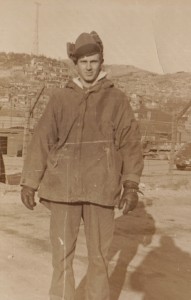
To my PyeongChang family, I say “thank you” for the trip of a lifetime, in so many ways. The experience with you gave me insight into the young man who was my father, from 1950-1952.
His time serving in the Korean War changed him and his life. He treasured his time there, as much as one can in war, and his words, which I recall hearing virtually all of my life took on a new meaning for me after spending almost two years among these incredible people that he loved so well.
Dad would look at me and say, “Son, the Korean people are the smartest and hardest working people on earth…I learned everything I know about hard work from them.” And for the record, my father worked very, very hard.
So PyeongChang, more than winning a bid, you provided something even more precious to me. You gave me a very real, enduring and new connection with my dear, departed father. That is a gift that is impossible to describe or to repay. Thank you.
Every bid has a story – whether it wins or loses. And each of these stories is full of incredibly brave, dedicated people all of whom fervently believe that the Olympic dream and its ideals will help make their home, and the world a better place. And each of these bids, win or lose, deserves our tremendous respect and gratitude.
They are the dreamers. They are the believers. They are our tomorrow.
So to Munich, Annecy and every other bid who ever took the leap of faith and walked on stage, I say Godspeed, great job, thank you for believing and I pray that you all live to compete again.
The world today needs something to believe in; it needs heroes, and the Olympics provide heroes in droves. But heroes aren’t always found on the field of play. Heroes are also found in that most fragile and humble member of the Olympic Family, Bid Committees.
These are the people dreaming of hosting an Olympic Games against all odds.
These are the people standing, sometimes petrified, behind a podium in giant, dark rooms pouring out their hearts to the Olympic Family.
These are the people who sacrifice precious time away from their families and friends, travelling the globe in an exhausting effort to find at least one more friendly voice of support.
And these are the average citizens, not connected to the Bid Committee, who stand in the snow or rain for hours to warmly welcome the IOC Evaluation Commission when it comes to town. These are the quiet Olympic heroes.
Without them, there would be no Host Cities.
Without Host Cities there would be no Olympic Games.
And without the Olympic Games, there would be no hope.
__________________________
Special thanks to Stratos Safioleas for use of his photos and review/edit/memory help. Stratos served PyeongChang 2014 and 2018 as their external International Media and Social Media Advisor.
Special thanks as well to Theresa Rah and Sharon Huff for their review/edit/memory help.
OUTTAKES FROM PYEONGCHANG 2018
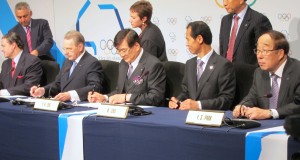
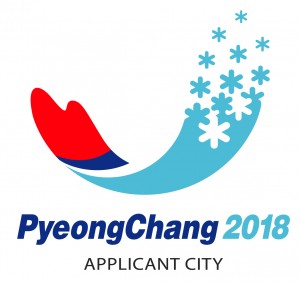
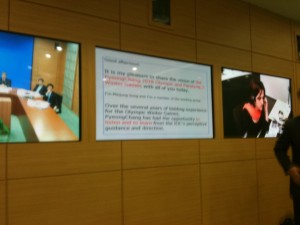
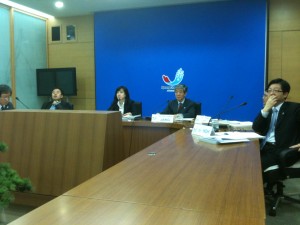
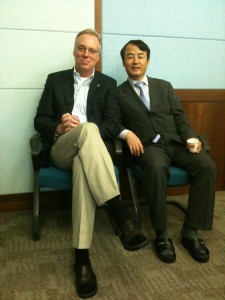
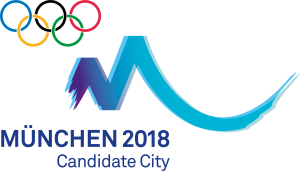
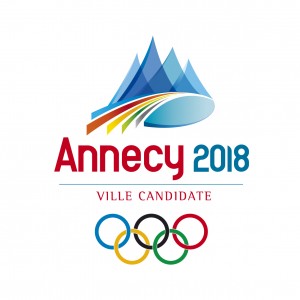
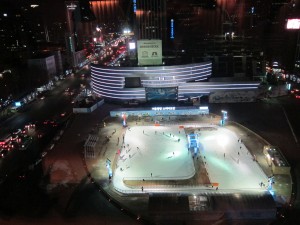
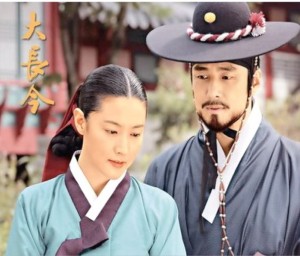
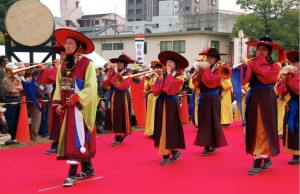
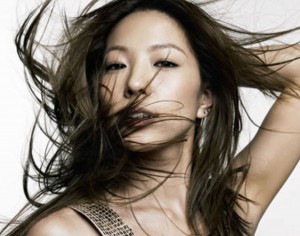
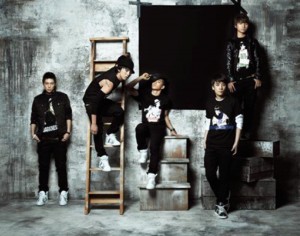

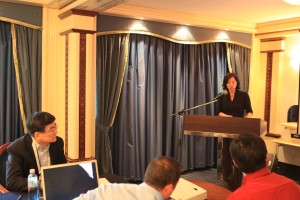
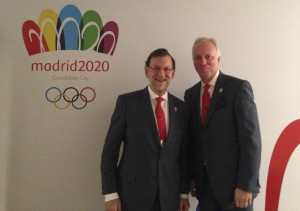
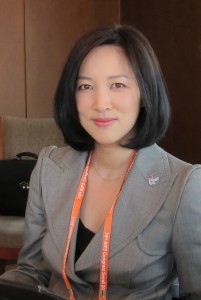
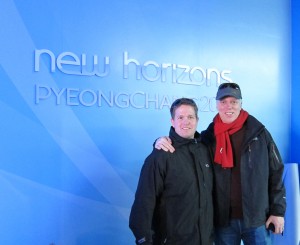
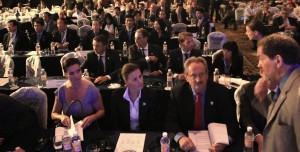
![Mex-1292[3]](http://www.terrencehburnsblog.com/wp-content/uploads/2014/03/Mex-12923-300x225.jpg)
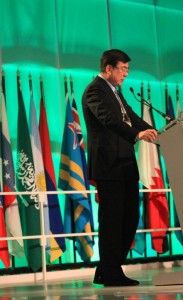
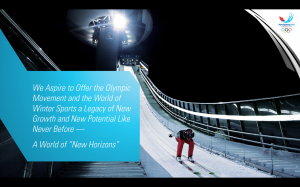
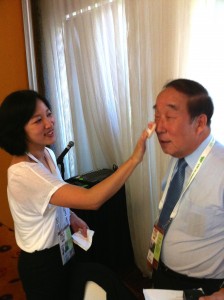

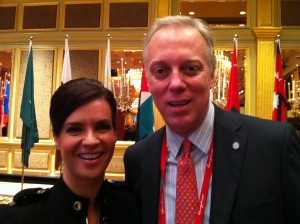
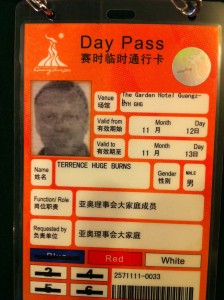
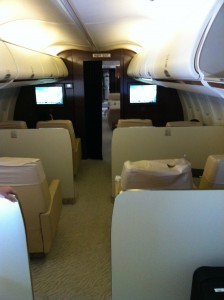
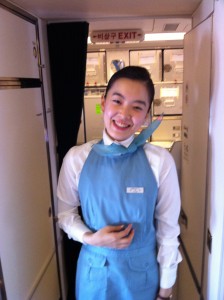
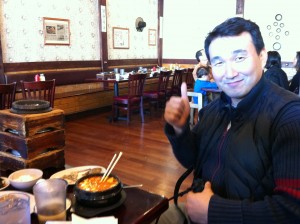
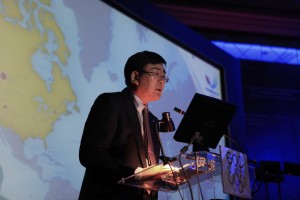
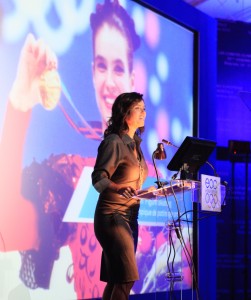
![Beograd-1193[7]](http://www.terrencehburnsblog.com/wp-content/uploads/2014/03/Beograd-11937-300x168.jpg)
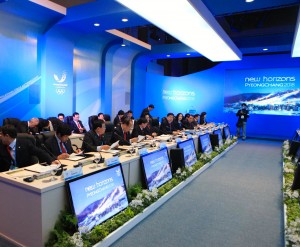
![Seoul-086[3]](http://www.terrencehburnsblog.com/wp-content/uploads/2014/03/Seoul-0863-300x225.jpg)
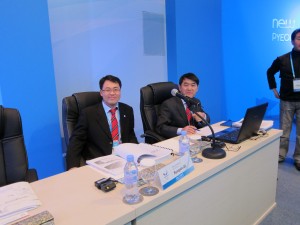
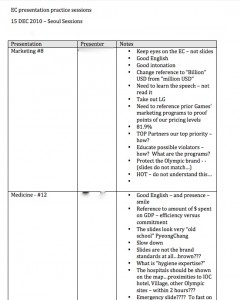
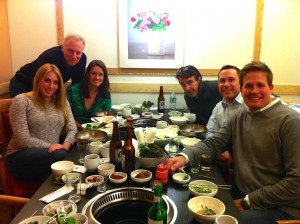
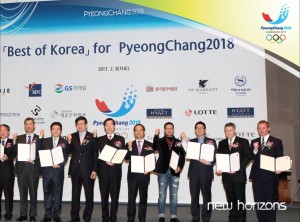
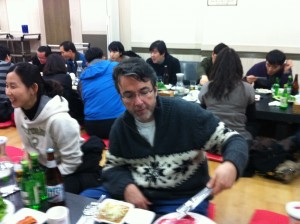
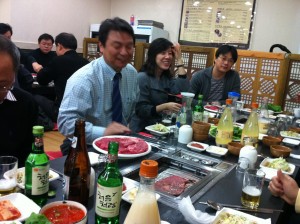
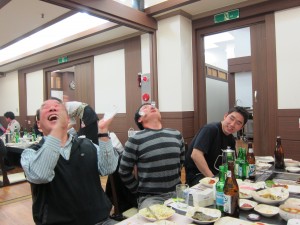
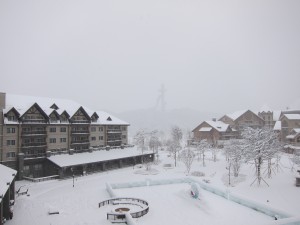
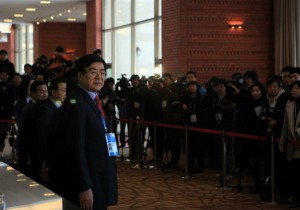
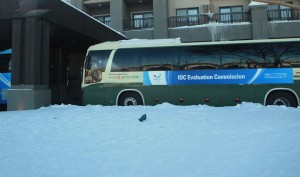
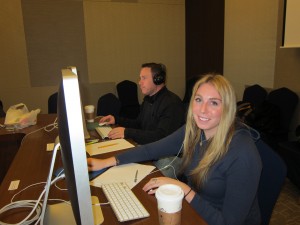
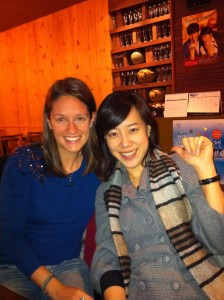
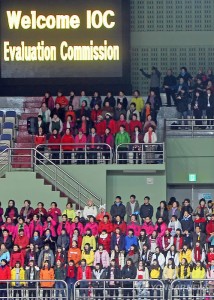
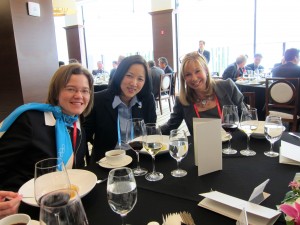
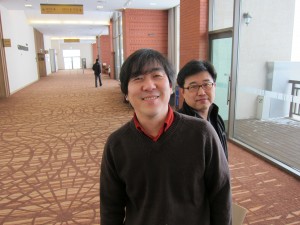
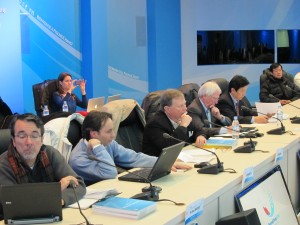
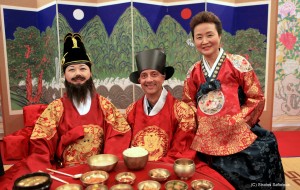
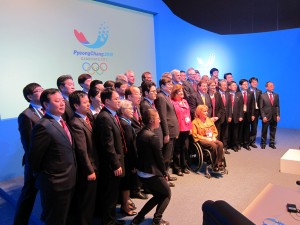
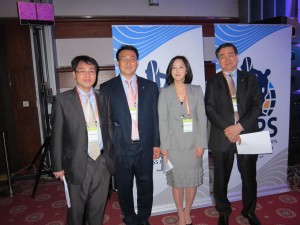
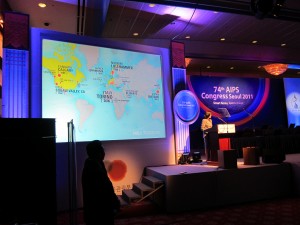
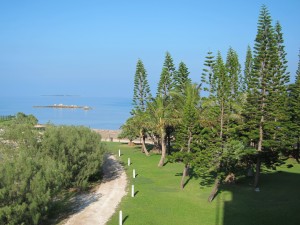
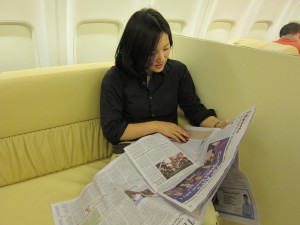
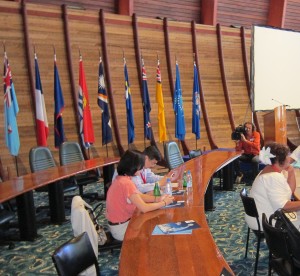
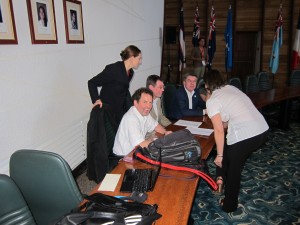
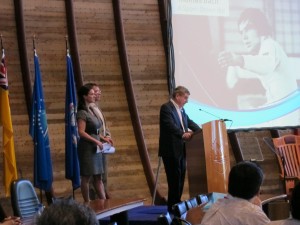
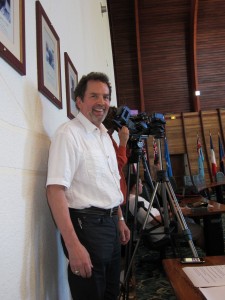
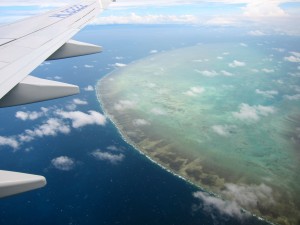
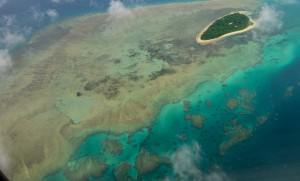
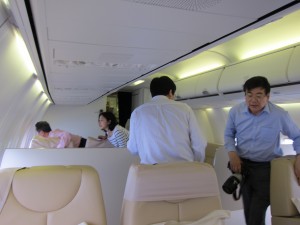
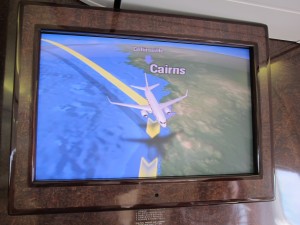
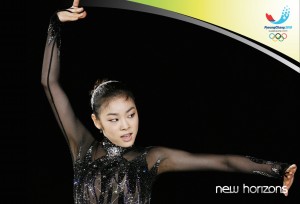
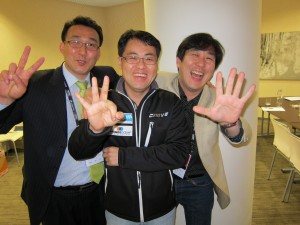
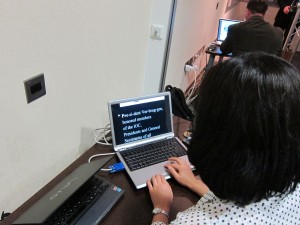
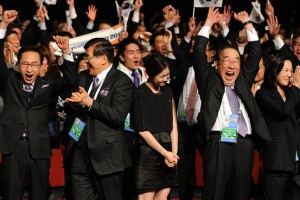
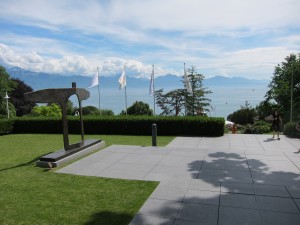
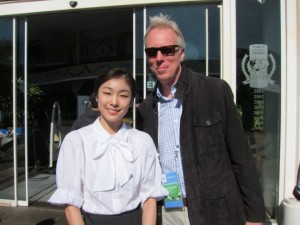
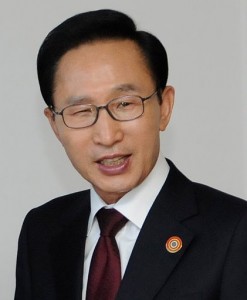

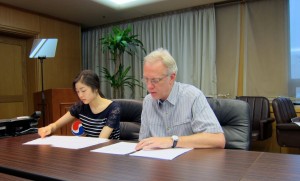
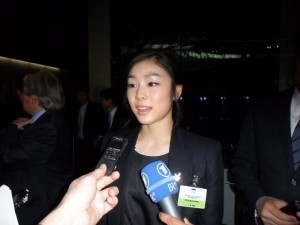
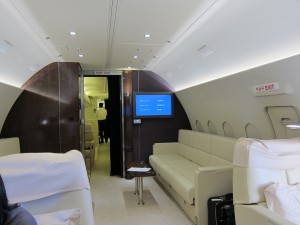
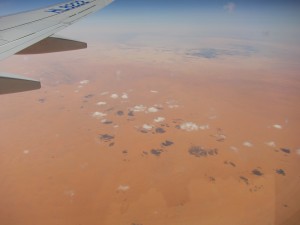
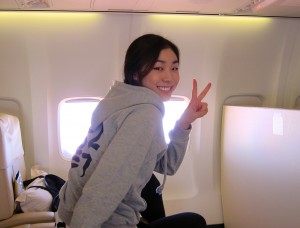
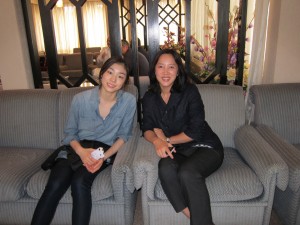
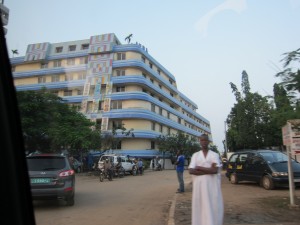
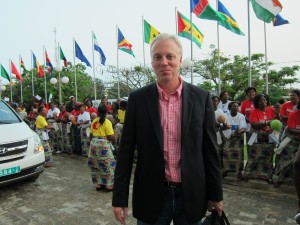
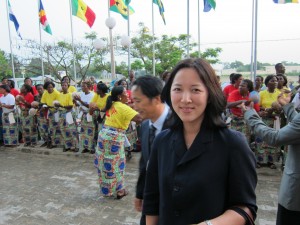
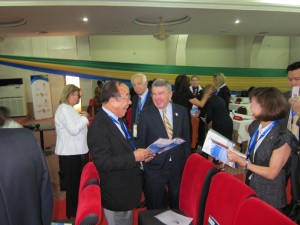
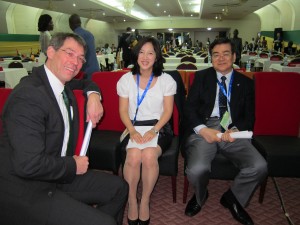
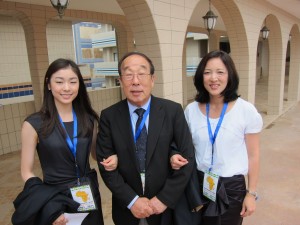

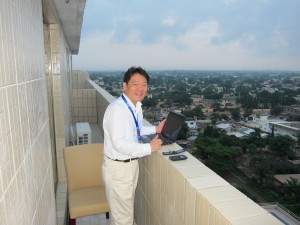
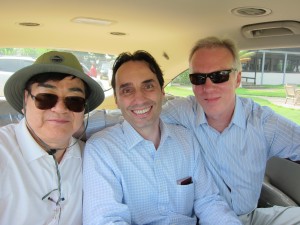
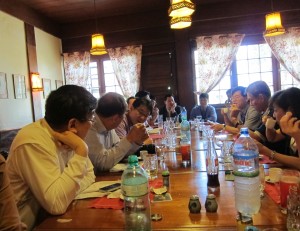
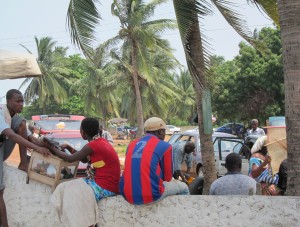
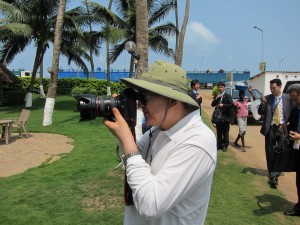
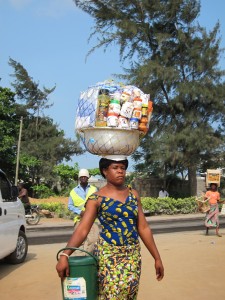
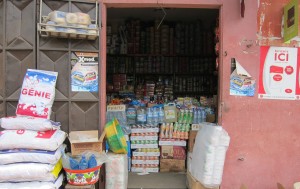
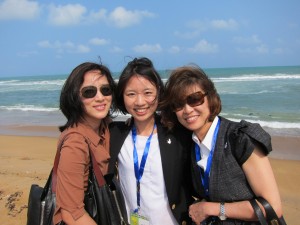
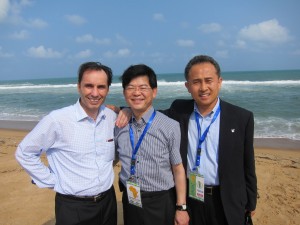
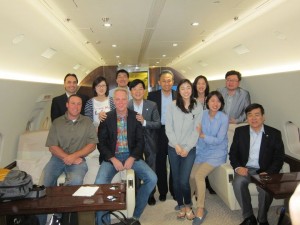
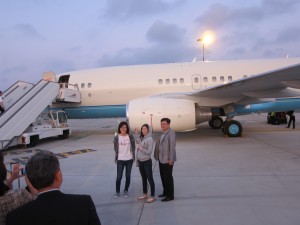
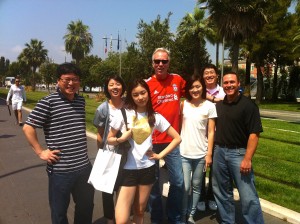
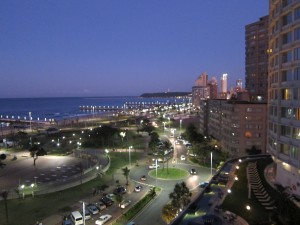
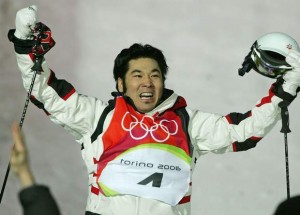
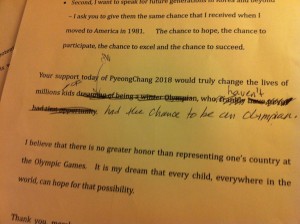
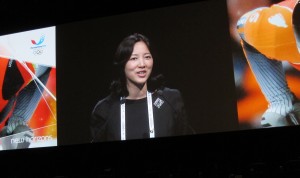
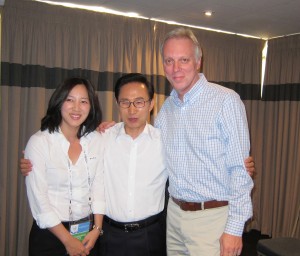
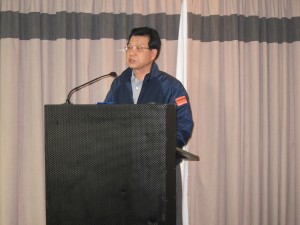
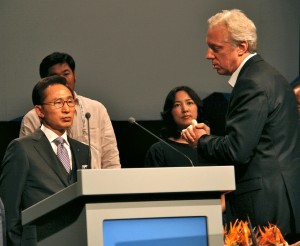
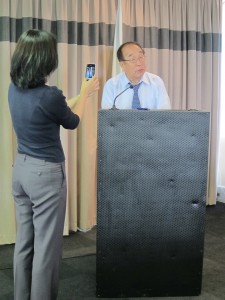

![Durban-1991[5]](http://www.terrencehburnsblog.com/wp-content/uploads/2014/04/Durban-19915-300x225.jpg)
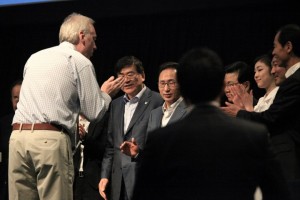
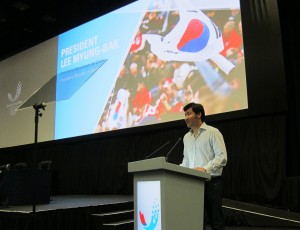
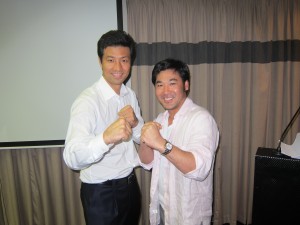
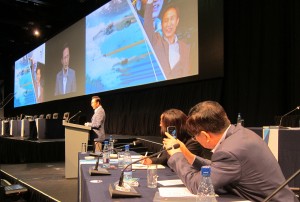
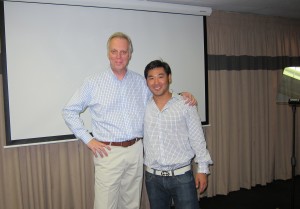
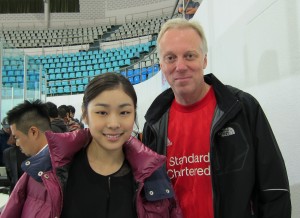
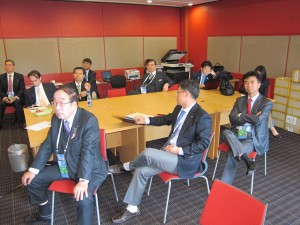
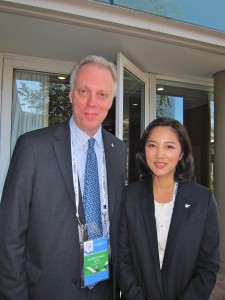
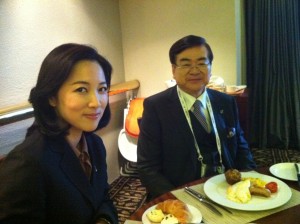
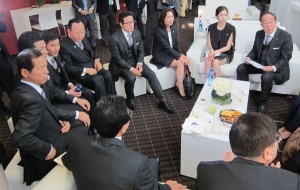
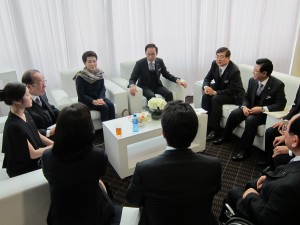
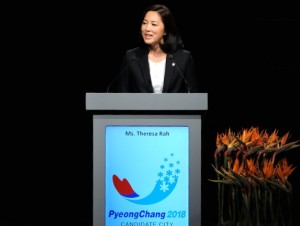
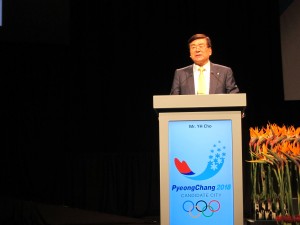
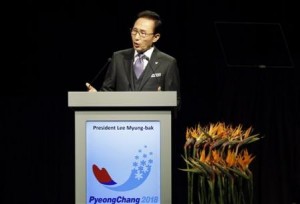
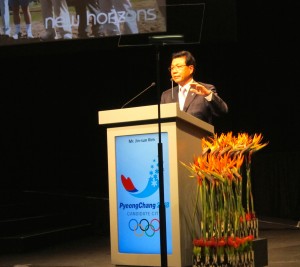
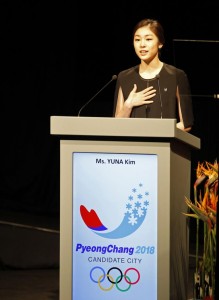
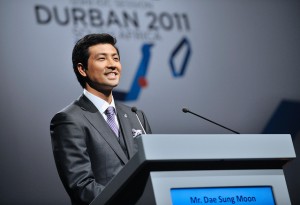
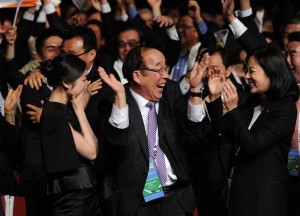
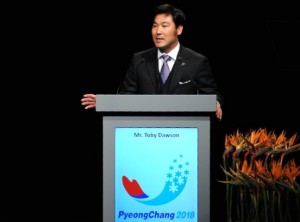
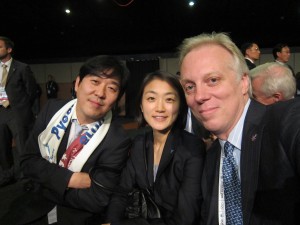
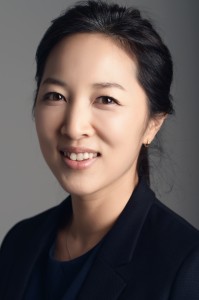
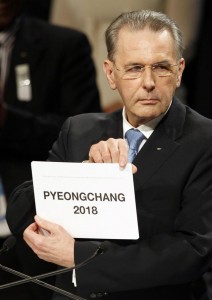
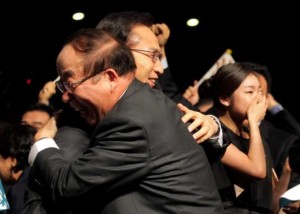
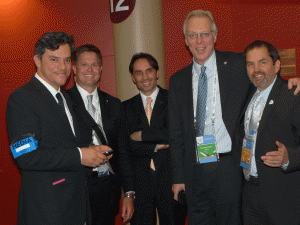
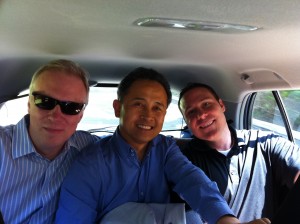
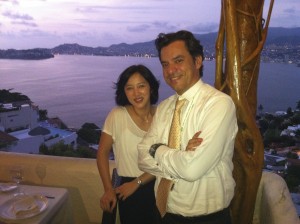
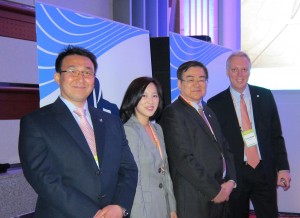
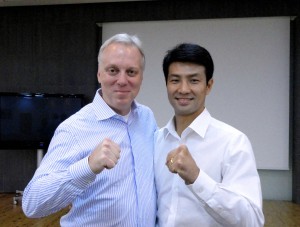
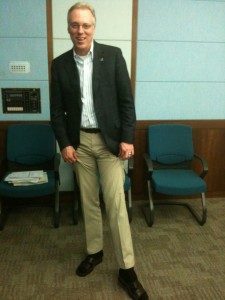
![Durban-1955[4]](http://www.terrencehburnsblog.com/wp-content/uploads/2014/04/Durban-195541-300x225.jpg)
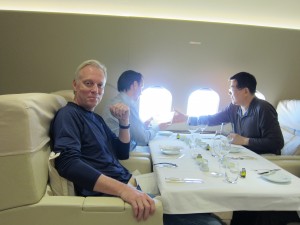

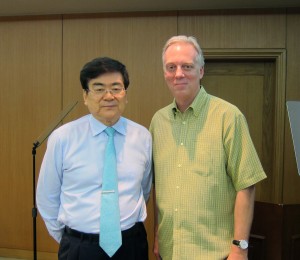

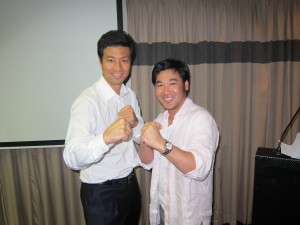
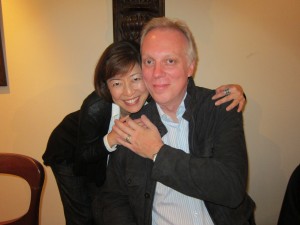
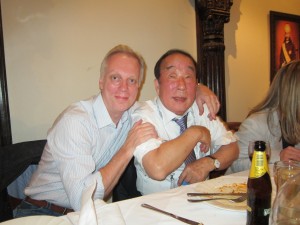
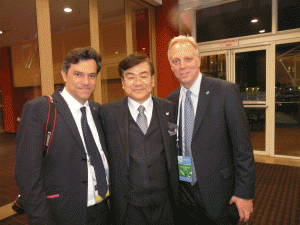
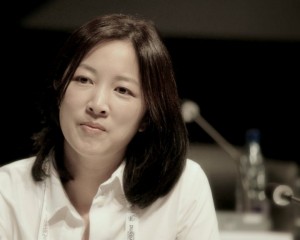
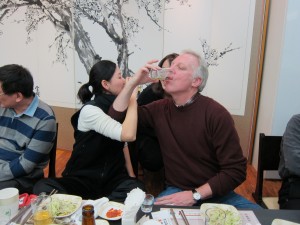
A very inspiring story. I’m very interested in the Olympic Movement. I have attended the 2009 Olympic Congress in Copenhagen as one of the members of the general public invited to go there. Is there any opportunity to join bid teams and organizing committees?
Thank you Ike – as to bid teams or Organizing Committees, yes, there are some opportunities for expert consultants but no many… TB